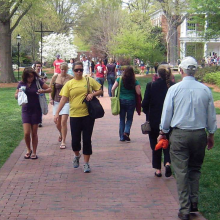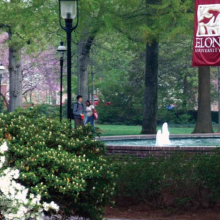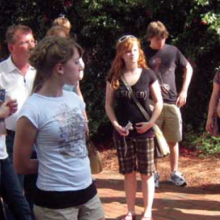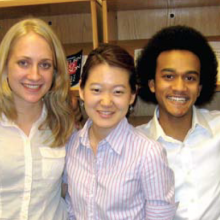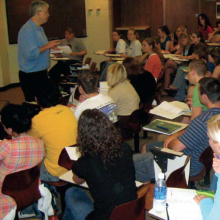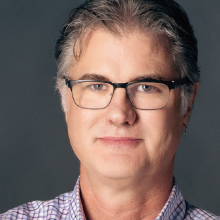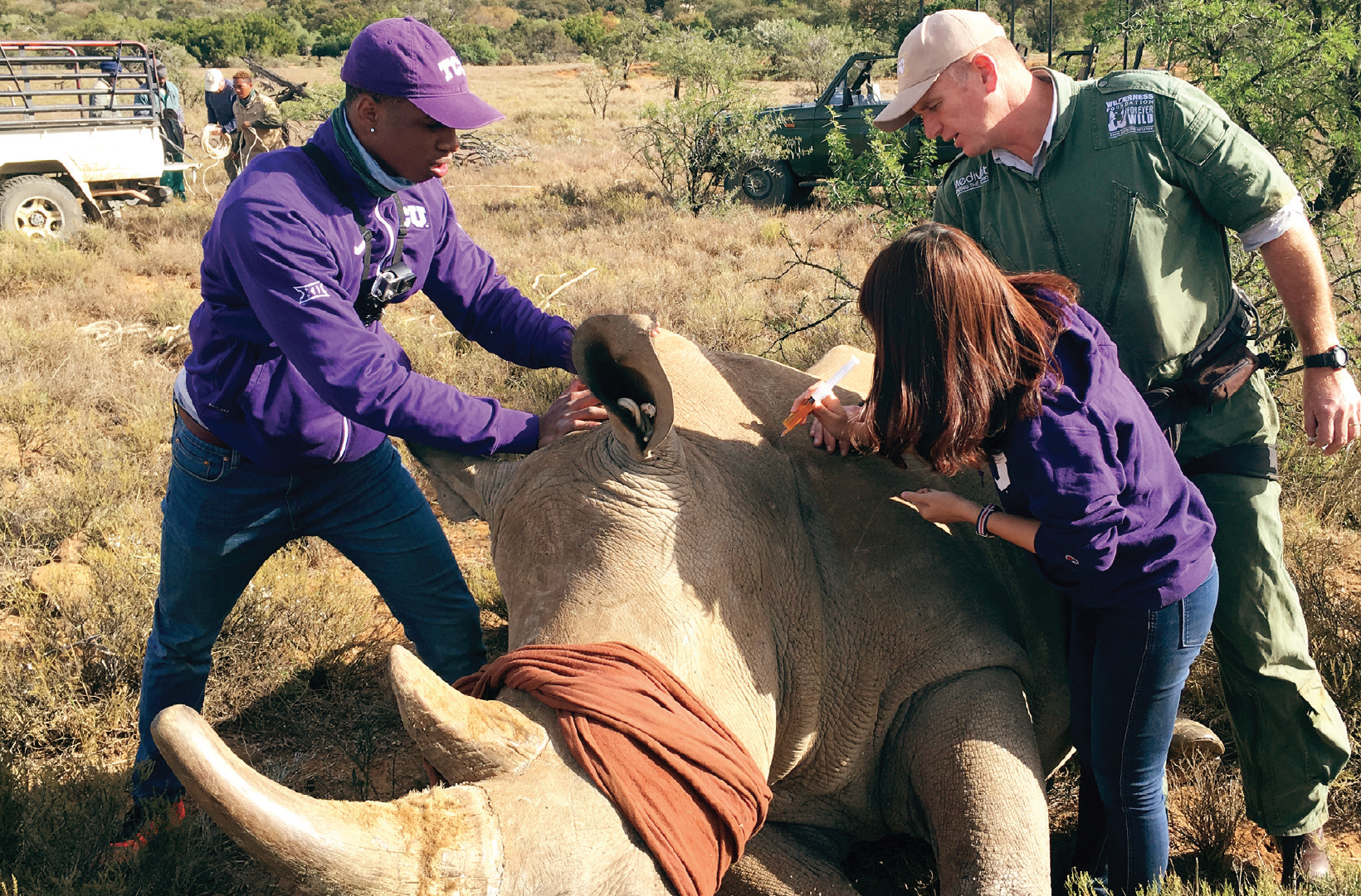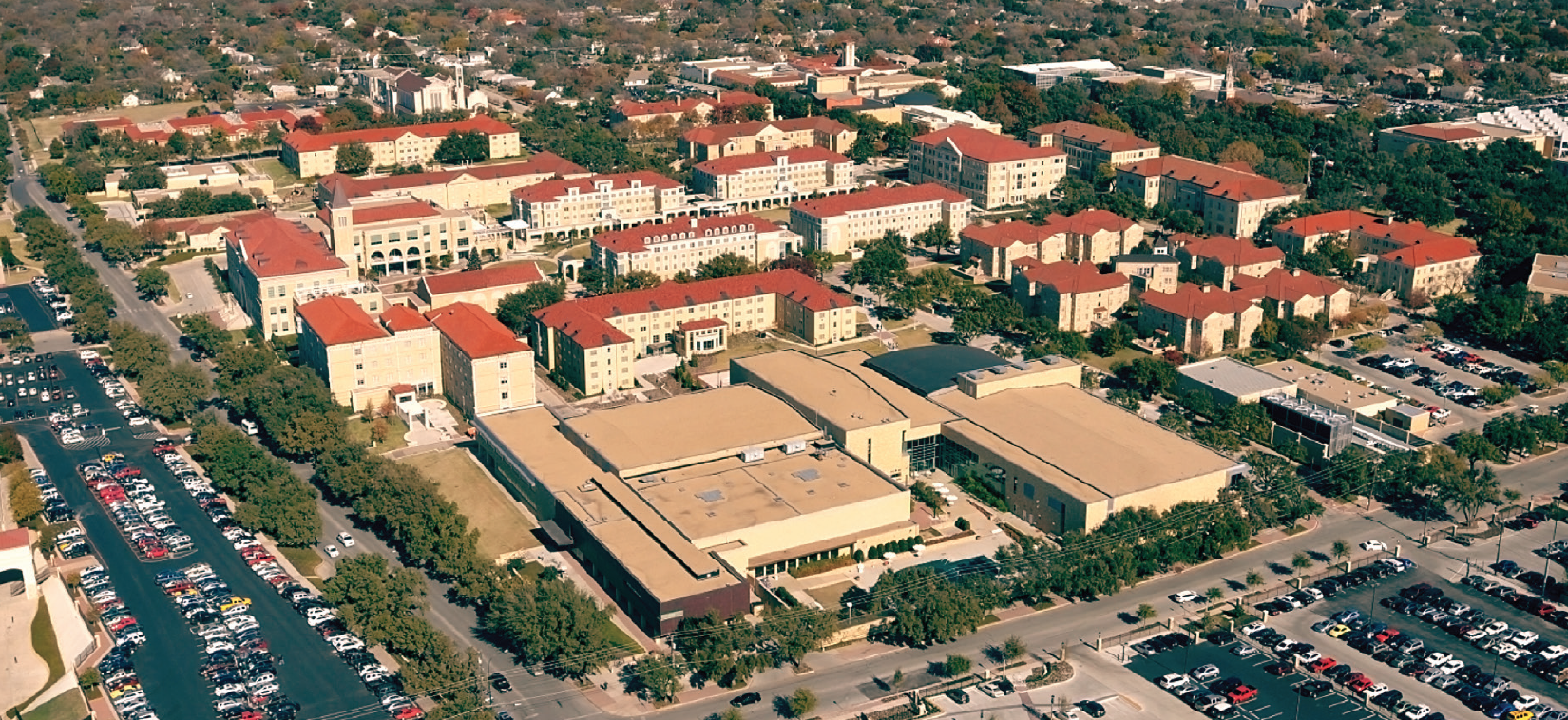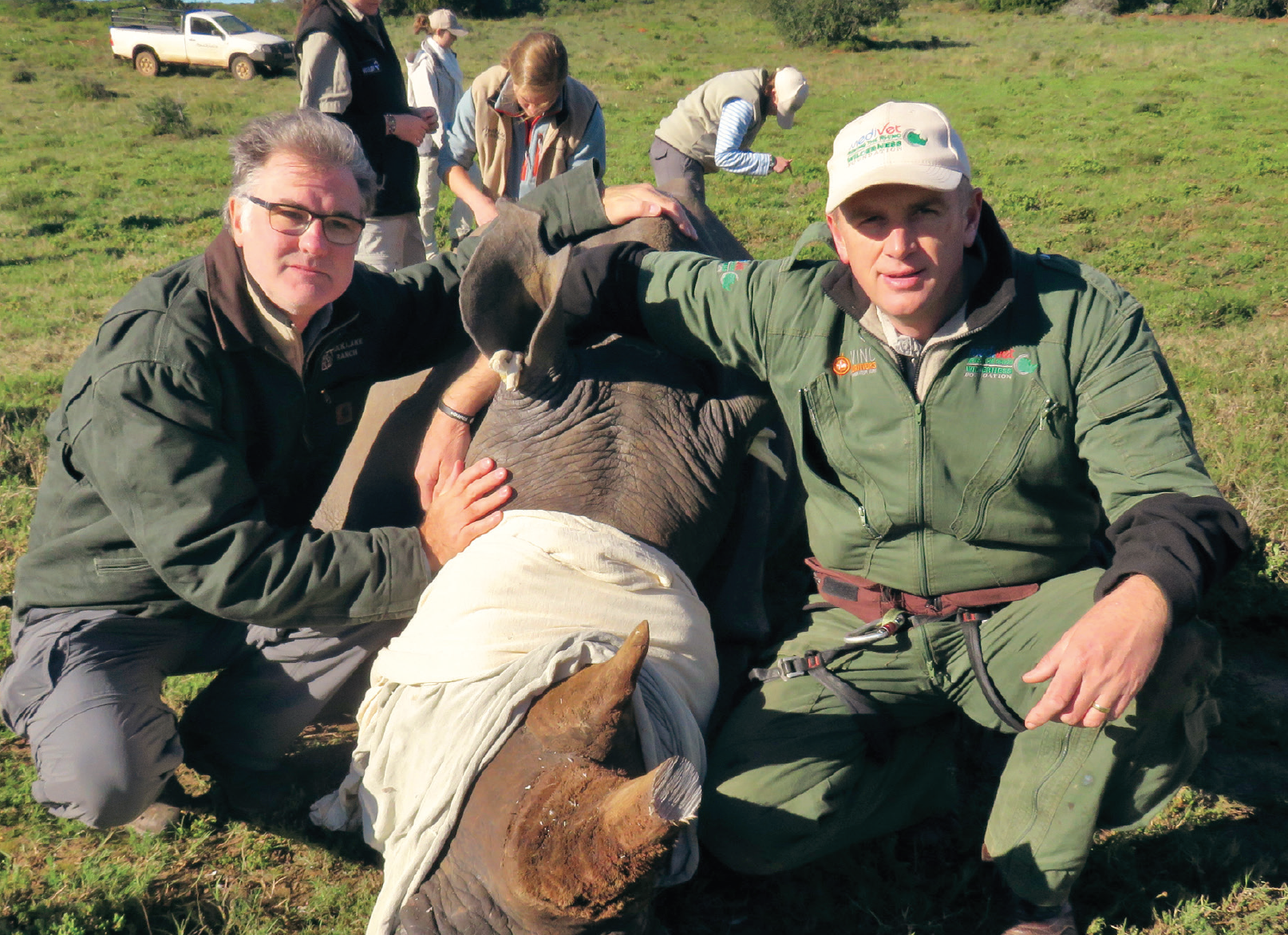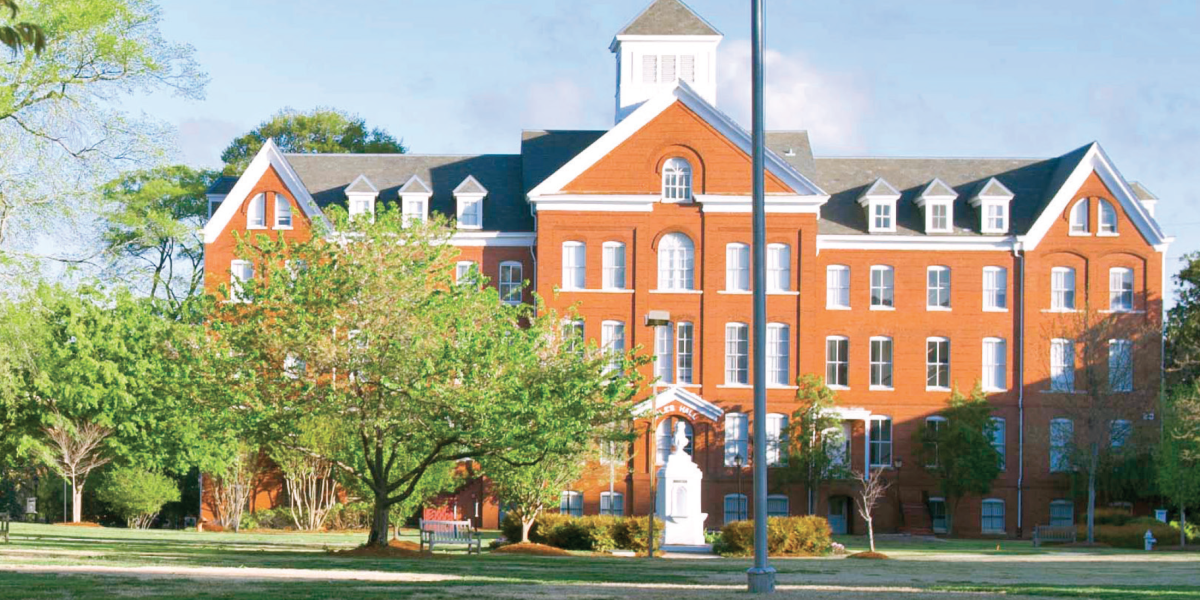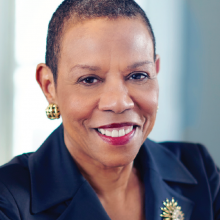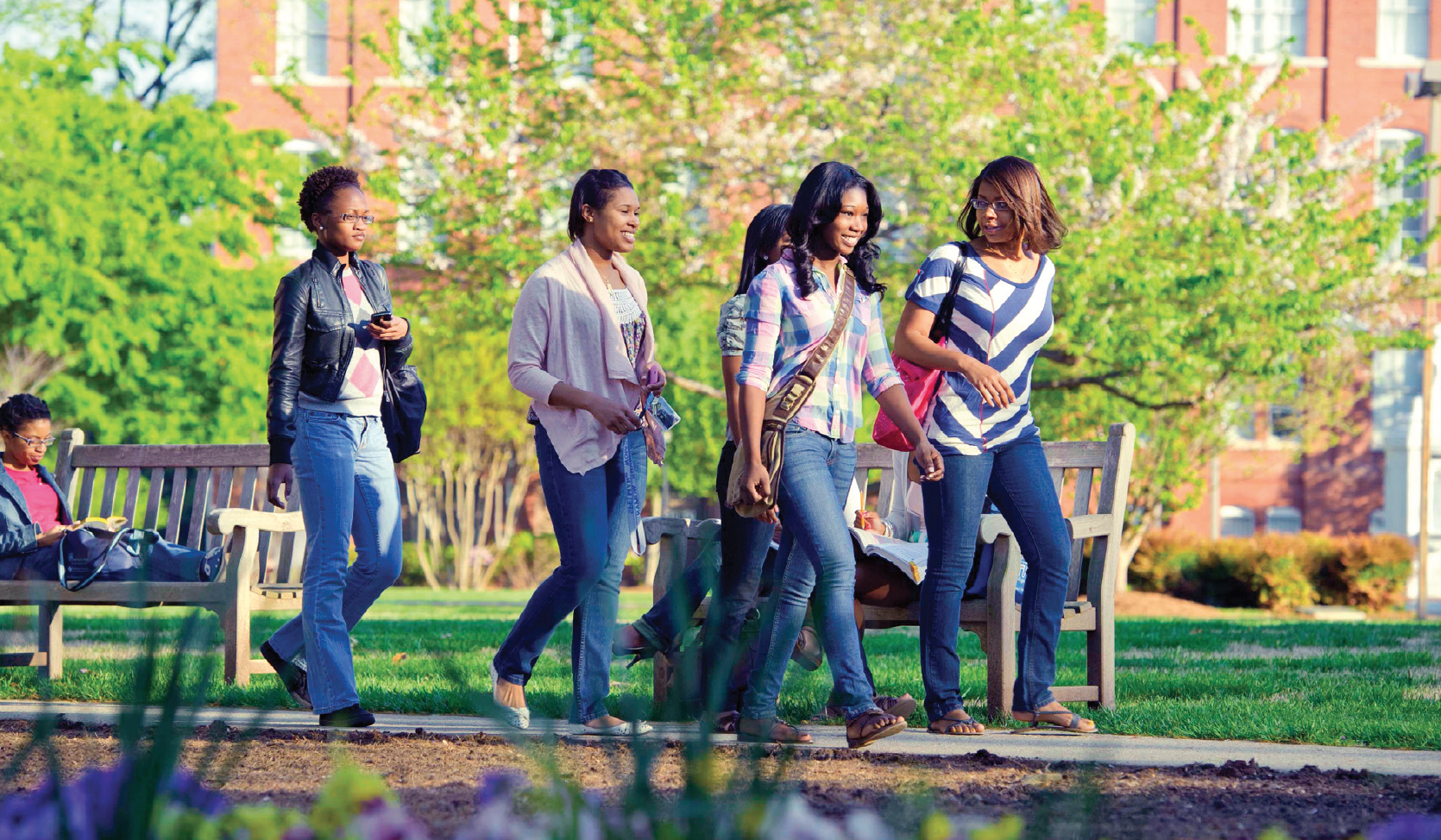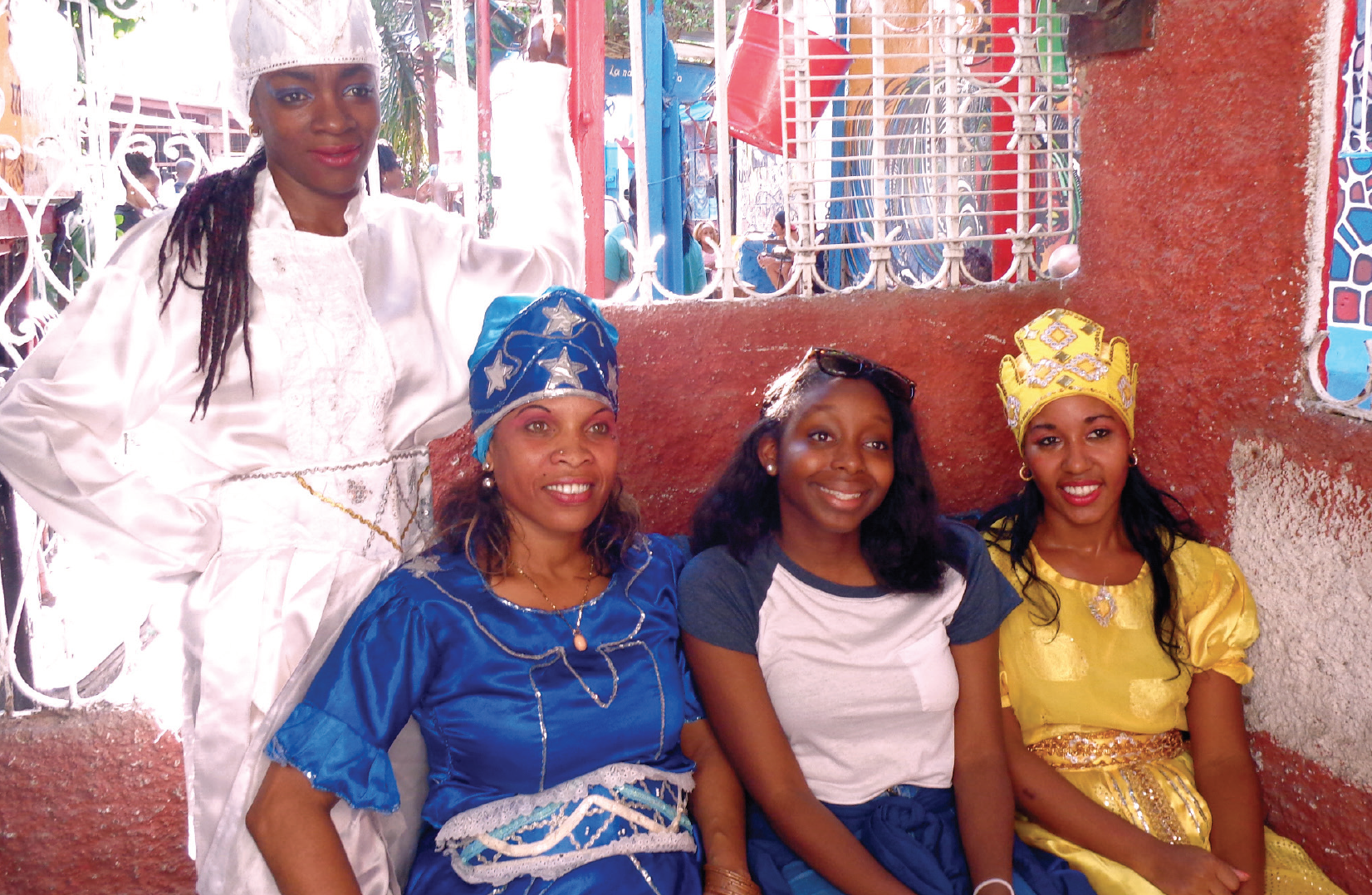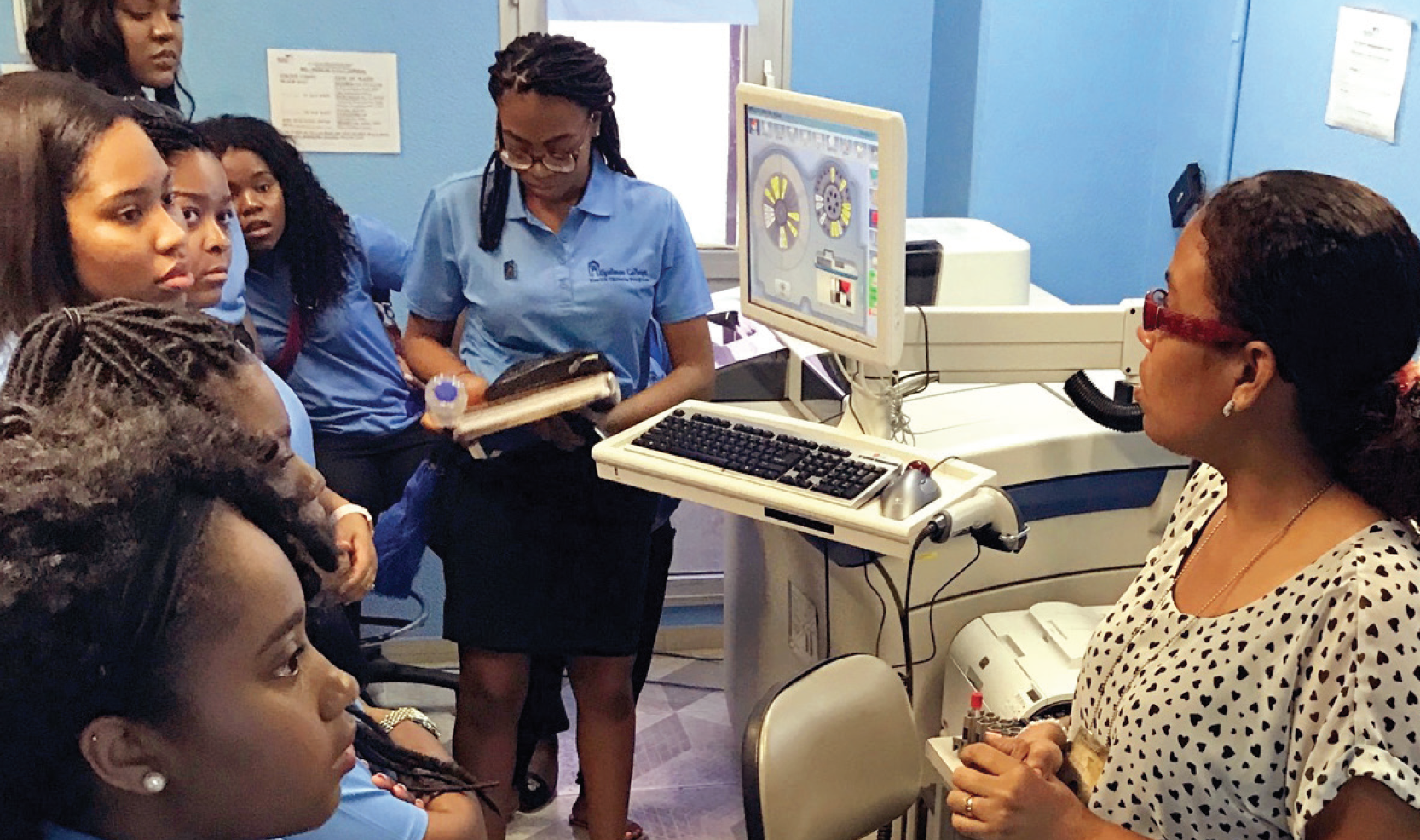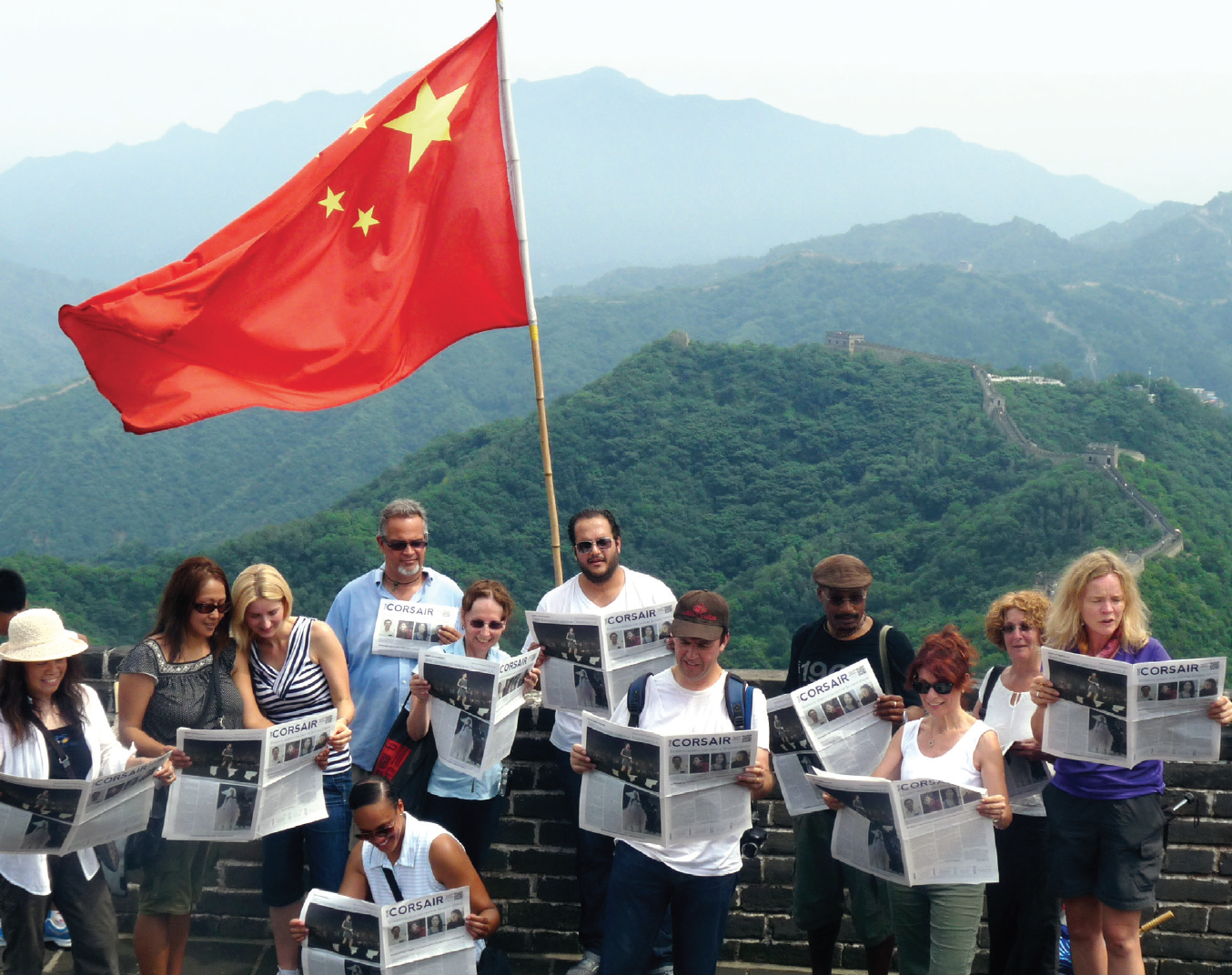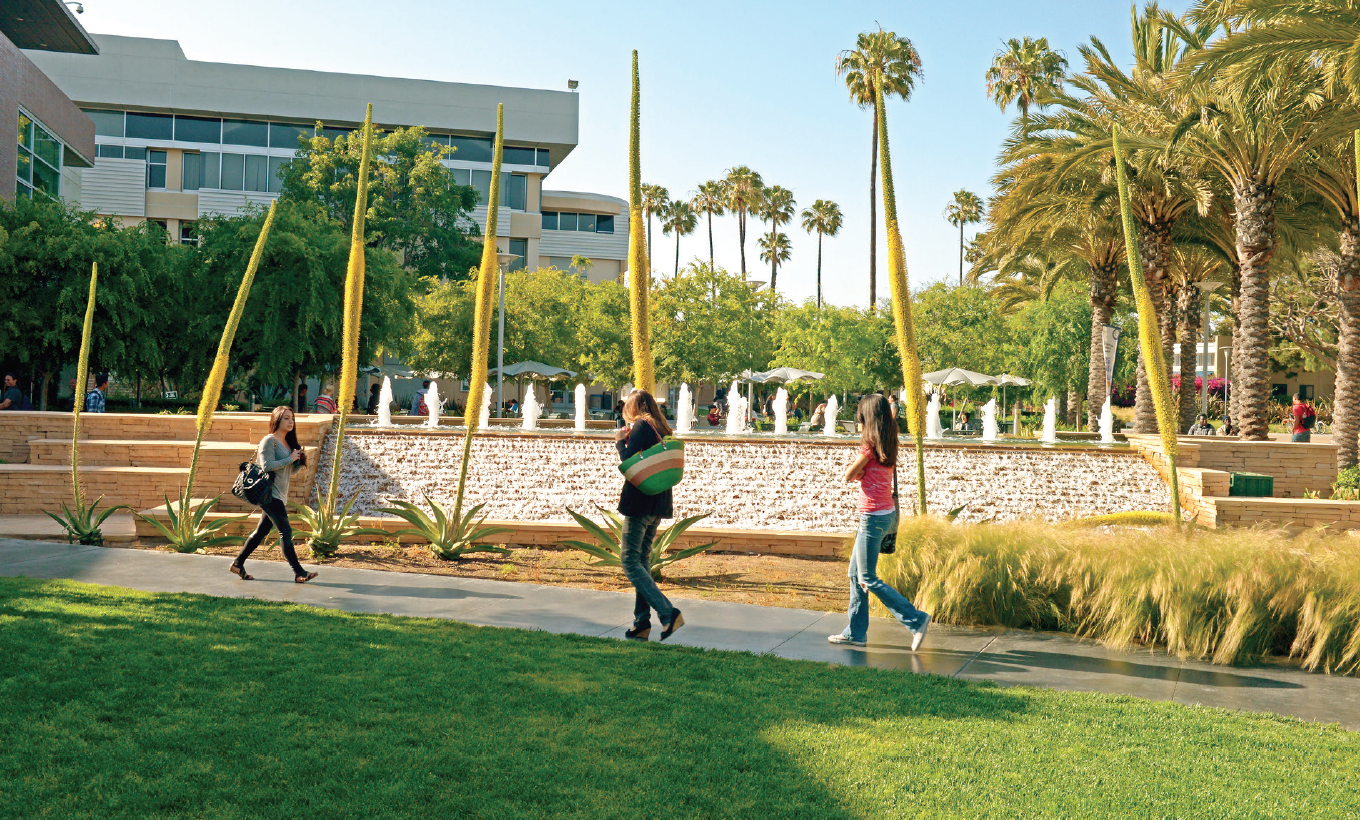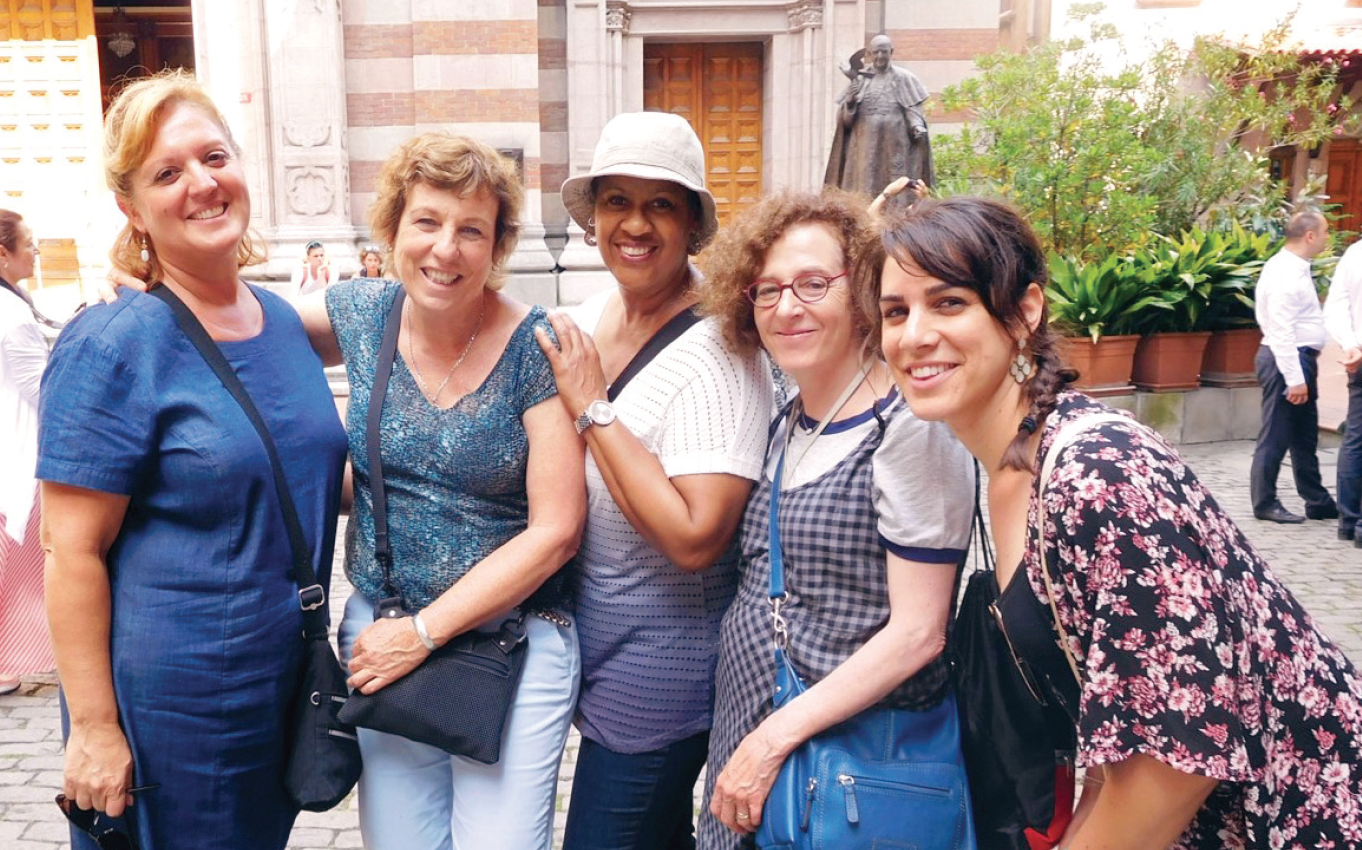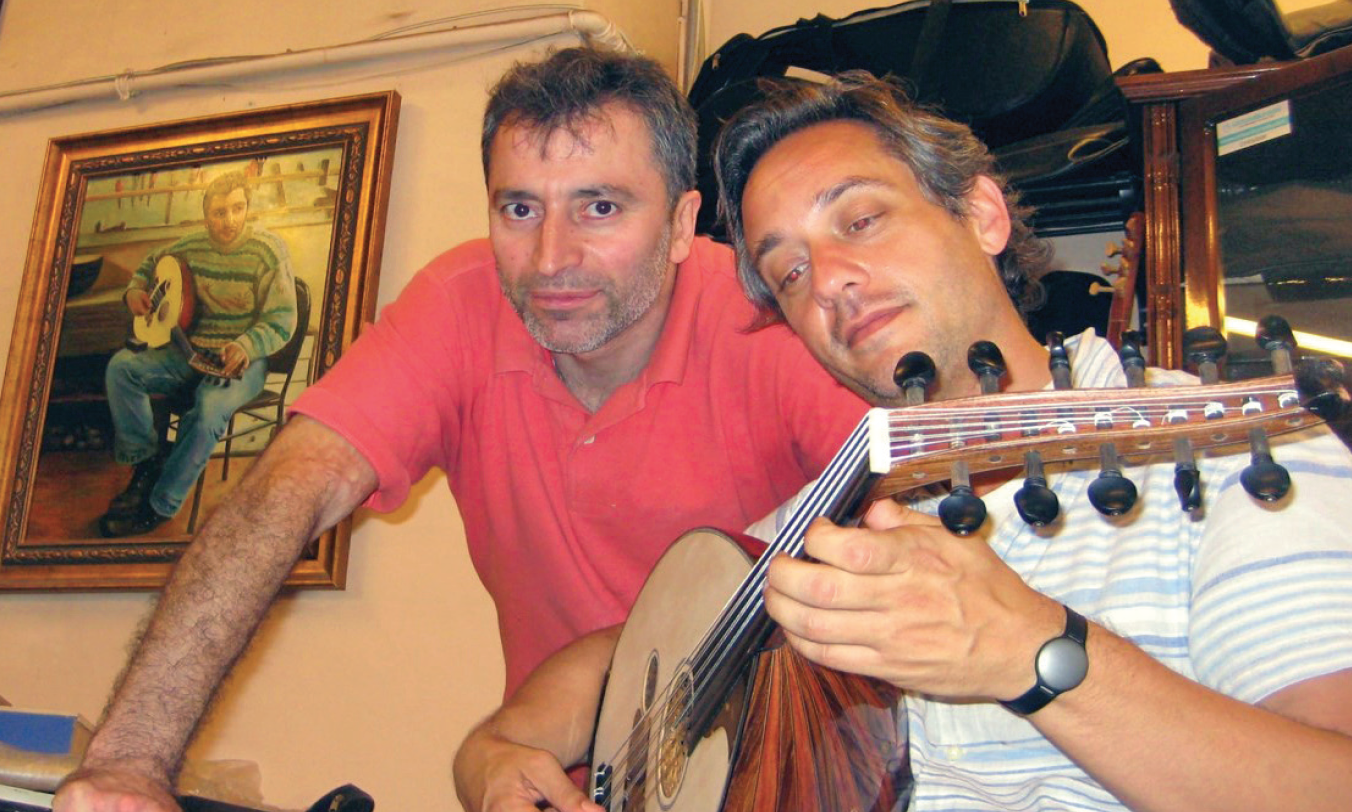People Development
Essential Career-Focused Publications
Tips for Achieving Success as a Scholar-Practitioner
Management Essentials for Education Abroad Offices
2007 Comprehensive Elon University
Elon University has gone on an extra-ordinary journey in the past 15 years, transforming itself from a regional college into a comprehensive university with a national presence that receives far more applicants than it can accept from across the country. The beautiful 575-acre campus near Burlington, North Carolina, with dogwoods, magnolias, cherries, redbuds, and oaks—Elon means oak in Hebrew—is designated a botanical garden, and Elon has mastered the knack of building in a Georgian style that makes new dorms and classroom edifices look like they have been nestled in those trees for eons.
Adding to the curbside appeal is Elon’s reputation as an institution where students become deeply engaged in community service, and where a large majority studies abroad. So deeply is study abroad engrained in the culture at Elon that even the custodial and administrative staff has the opportunity to see London in January, when the flats reserved for Elon students in the fall and spring would otherwise be empty.
Elon provides each student—and, if they so request, prospective employers and graduate schools—not only course grades, but a second, formal transcript on their participation in five “Elon Experiences,” namely: leadership, service, internships, study abroad, and undergraduate research.
Elon cemented its reputation for civic engagement by perennially emerging among the high scorers on the National Survey of Student Engagement. Elon also was one of the 10 original campuses that em-braced Project Pericles, a national effort to promote good citizenship under the aegis of philanthropist Eugene Lang and his foundation. Not only did 71 percent of the Class of 2007 study abroad, but 80 percent completed an internship and 91 percent engaged in volunteer service.
Elon engineered its rise with strong administrative and faculty leadership, a passion for strategic planning, and a knack for stretching limited dollars. (These gains have not gone unnoticed: a 2004 book authored by George Keller from Johns Hopkins University Press, Transforming a College: The Story of a Little-Known College’s Strategic Climb to National Distinction, examines Elon’s rise to a top regional university.) Elon is a place that prides itself on congeniality, down to the “College Coffee” on Tuesday mornings when classes and work stop for 40 minutes while students, faculty, and staff gather outside the main campus building for coffee, donuts, and conversation. Faculty have embraced study abroadwith gusto. Each year, more than 50 faculty memberslead study abroad programs, most on short-term courses offeredin the winter and summer. A Study Abroad Committee, a standing committee of faculty that includes two student members, passes judgment on each program, and faculty say their participation in study abroad, including not only course development and teaching but scholarship as well, is valued as a critical part of their professional development.
Clearly, international studies and global awareness have played a large role in the creation of this new Elon. “Two or three decades ago Elon served first-generation college students,” says President Leo M. Lambert. Today, 80 percent of the parents are college graduates and more than a third boast graduate degrees as well. “These parents are aware how small the world is getting and how important it is for their student to experience that world more broadly through their Elon education,” adds Lambert.
Lambert’s predecessor, J. Fred Young, president from 1973 through 1998, set the institution on this course and nurtured the study abroad programs. Young, a former school superintendent, created an organization that continues to place teachers from other countries in North Carolina public schools. He personally recruited one of those exchange teachers, Sylvia Muñoz of San Jose, Costa Rica, to come to Elon to open El Centro de Español—the Spanish Center—to provide Spanish language and cultural lessons in an informal setting to students, faculty, and staff alike. Now ensconced in remodeled Carlton Building next to the Isabella Cannon Centre for International Studies, El Centro bustles with activities day and night.
Isabella Cannon Shows the Way
At his 1999 installation, Lambert announced a landmark $1 million gift from Isabella Cannon, a 1924 Elon alumna, that gave international studies a showcase home at the heart of campus, overlooking Scott Plaza and Fonville Fountain. Cannon, born in Scotland in 1904, was a librarian, civic activist, and globe-trotter who in 1977, at age 73, campaigned as “a little old lady in tennis shoes” to unseat the mayor of Raleigh. A diplomat’s wife, she had lived in China, Iraq, and Liberia before concentrating her energy on opening parks and improving life in North Carolina’s capital. As commencement speaker in 2000, the diminutive Cannon reminded Elon graduates that collectively they had “a grand total of more than 50,000 years to make this a better world.” She made another major gift that allowed Elon to build the Isabella Cannon International Studies Pavilion, which houses 11 international and 11 U.S. students and is one of several living-learning communities in the university’s Academic Village, modeled after Thomas Jefferson’s design for the University of Virginia. Cannon died in 2002 at age 97, six months before the dedication of the new Isabella Cannon Centre for International Studies, with Benazir Bhutto, the former prime minister of Pakistan, as principal speaker.
Elon changed its name from Elon College to Elon University in 2001—the town that had grown up around the college had to change its name, too, from Elon College, North Carolina to plain Elon—and, underscoring that status, opened the Elon University School of Law in nearby Greensboro in August 2006. Elon already offered graduate degrees in business, education, and physical therapy. On Lambert’s watch, the full-time faculty has grown from 192 in 1999 to 291 in 2006.
Elon charges lower tuition than many of the universities with which it competes for students, but it does not discount that “sticker price” to woo students. Its endowment stands at $70 million, but Elon’s leaders hope to boost it by $100 million in a five-year campaign now underway.
Elon’s growth over the past decade was fueled by admitting more students, from 3,500 in 1995 to more than 5,200 today. “We’ve benefited tremendously from our location and being in this great mecca of higher education in North Carolina,” says Lambert, a former education professor and associate dean at Syracuse University who founded an innovative program there to hone the teaching skills of future professors. “Growth has fueled quality at Elon; there’s absolutely no doubt about it,” Lambert says. “But we can’t continue to growand still be the intimate kind of community Elon is right now.”
Studying Abroad in January
Elon has built its study abroad reputation largely around month-long winter-term courses offered in the middle of its 4-1-4 calendar. It began with a single January course in London in 1969. Elon now offers approximately 30 such winter-term study abroad courses. In 1985 Elon began sending students and a professor to London for a full semester; in 2006 the university added a faculty-led semester in San Jose, Costa Rica, that combines Spanish classes with courses taught in English in marketing, the politics of Central America, and environmental issues.
Elon also offers students opportunities to enroll in 32 affiliate and exchange programs as well as seven Elon summer study abroad courses. Increasingly, Elon also is placing students in international internships, co-ops and other educational experiences, and Laurence Basirico, dean of international programs, is scouting possibilities for new semester-long Elon programs in Europe and Asia. “We want to have one on each of the continents,” says Steven House, dean of Elon College, the College of Arts and Sciences.
These extensive off-campus programs are a costly undertaking for an institution on a tight budget. That they have grown so large is testament to the importance the university places in international education. “When you have 60 students studying abroad for a semester in Italy, Elon sends all of their tuition funds to the Italian school and loses use of these funds for the main campus. It’s a big expense,” says Provost Gerald Francis, who joined the faculty in 1974 after earning his Ph.D. in mathematics at Virginia Tech. Francis’s 24-year tenure as academic dean and provost spans the Young and Lambert eras. His role in Elon’s metamorphosis was pivotal.
From Custodians to Faculty, Everyone Gets a Chance to Go Abroad
Francis also has been a champion of finding creative ways to help faculty and staff experience travel abroad. Gerald Whittington, Elon’s vice president for business, finance, and technology, personally has led 300-plus Elon faculty and staff—from full professors to custodians—on more than a dozen London trips. Whittington sees a practical payoff to taking the staff to see the sights of London for themselves. “Our students are getting messages from above, below, and sideways that this is an important value of the institution and one that they ought to participate in. That’s why we do it,” says Whittington, who grew up in the great cities of Europe.
“Don’t think there is not self-interest in this. They are all part of the sales force,” agrees Francis. The provost even encourages Basirico to send a university staff member, when possible, with the faculty who lead the regular study abroad courses in January. If an Elon art historian takes students on a fast-paced program to Italy, “it really helps if you have somebody to help keep up with the busses and hotels,” reasons Francis. “Librarians, purchasing agents, the registrar, or people in student life can (do that) to help the program run smoothly. And that makes them part of the international campus here.”
Courses with Few Prerequisites
Last January, Elon faculty led students to Australia, Barbados, Brazil, China, Costa Rica, France, Germany, Ghana, Greece, Guatemala, Ireland, Italy, New Zealand, Peru, the Philippines, and beyond.
While students typically pay from $2,800 to $5,500 for travel, lodging, and other expenses for the winter study abroad courses, they are charged no extra tuition; that is bundled into the fall semester tuition. Courses also are offered back on campus for students who cannot participate in the study abroad. Traditionally, most of the winter-term study abroad programs are 200-level courses with few prerequisites. That was done intentionally so students wouldn’t be precluded from signing up, says Basirico. Thomas K. Tiemann, an economics professor who holds an endowed chair, says, “There’s a big range of study abroad opportunities here, depending on the students’ experiences, attitudes and how brave they are.”
Increasingly, these courses are gaining rigor. Some were challenging from the start, such as “Field Biology in Belize,” in which students learn about rainforest ecology and explore a coastal reef. The course is open to non science majors, but since it counts as a lab elective for the many biology majors who sign up, “I want it to be challenging,” says biology professor Nancy E. Harris. “They may have had botany, zoology, and maybe even ecology, but when they get there, they are blown away. It’s truly an eye-opening experience.” Students start each day at a wildlife preserve in Belize’s Rio Bravo bird-watching at 6:30 a.m., followed by lectures and field observations. Students keep cultural and scientific journals, take exams and lab practicals. It’s a real science class but with a huge dose of cultural and biological reality. “The itinerary reflects the rigor. There’s very little free time,” says Harris, who also is associate dean of the College of Arts and Sciences, which is called Elon College. “There are howler monkeys overhead, jaguar in the forests, poisonous snakes under the decks, (and) bats in the bathroom. It’s cool.” At night students go out with flashlights, poke sticks in holes, and “play the game of who will let the tarantula walk over their head,” says Harris. During the marine biology half of the class, the students go snorkeling along the coral reefs in the azure Caribbean off Ambergris Caye, but even there they have lectures, tests, and field reports to complete. A USA Today reporter who accompanied the class in January 2004 noted, “One of their final exams, a ‘fish and coral practical,’ is conducted under water, using waterproof paper.”
“Study abroad has tentacles…”
Faculty new to Elon often are surprised at how quickly the opportunity arises to teach in another country. Vic Costello, associate professor of communications, says, “It seems like the whole institution buys into it. I’m living proof. Two years after I came in, I was leading a class to Europe.” Demand was strong for Costello’s course, Gutenberg, Reformation and Revolution: Media’s Impact on Western Society, which took students to Mainz, Germany, the birthplace of the printing press, and ended in Geneva, Switzerland, where the Internet was born at the CERN Institute. “Study abroad has tentacles that go throughout the campus. It is fully integrated with the culture of the school,” says Costello, who chairs the Study Abroad Committee.
Vice President G. Smith Jackson, the longtime dean of students and coordinator of the Elon Experiences, says, “Students come to Elon because of our active, engaged approach to learning, and study abroad is at the top of that.” Jackson describes the dynamic as a “collision of powerful factors: students and parents who want this type of education, an administration that supports it, and faculty who understand the power of that pedagogy.”
Elon awards $50,000 in scholarships for study abroad each year. Honors students and Elon Fellows automatically receive a $750 travel grant as part of their awards. “When we spend a dollar around here we like to say we are getting two or three things done,” says Lambert. “An example is the way we top off certain scholarships to emphasize the importance of internationalization and global citizenship.”
Good Timing for an International Plan
A decade ago, when winter study abroad started taking off, the international program was still operating out of a crowded ground-floor office in the Alamance Building. Bill Rich, then the dean, put together an ambitious blueprint for expanding the size, staff, and reach of the international programs office. A year later, when Isabella Cannon presented her $1 million gift, it became a reality. Rich, an emeritus professor of religious studies, retired in 2004, but still leads a winter-term trip to Athens and Thessalonica to study the art, architecture, mythology, and religion of ancient Greece. Some of these winter courses are so popular that students are left with a second or third choice. It’s a far cry from the early days when “we would stand in the cafeteria lines to recruit students for study abroad,” Rich says.
Education Internships in Costa Rica
Basirico, who is also a sociology professor, returned from a 2004 trip to Costa Rica and asked F. Gerald Dillashaw, dean of the School of Education, if he’d be interested in sending education majors to San Jose for a semester to intern in Costa Rican classrooms. The School of Education already was sending upward of 20 sophomores to assist in London schools each spring. In Costa Rica, of course, there would be the added complexity of working in Spanish. Immediately, “everyone on our advisory committee was in favor of the idea,” says Janice L. Richardson, an associate professor of mathematics who directs the North Carolina Teaching Fellows Program at Elon. The Teaching Fellows Program is a scholarship program jointly funded by the state and the university that provides $13,000-a-year scholarships for 25 students from North Carolina who agree to spend four years teaching in North Carolina schools. Both Dillashaw and Richardson traveled to Costa Rica to lay the groundwork, and seven education majors spent this past spring as teacher aides in San Jose, living with local families and also taking classes of their own. On a recent visit, one Elon sophomore told Richardson, “Now I know what it’s like to be a Spanish-speaking student walking into an English classroom and not understanding the language.”
Elon has another steady connection with Costa Rica. As a reward for faculty and staff who participate in the conversational Spanish classes and cultural activities at El Centro de Español, Sylvia Muñoz escorts a dozen or more faculty and staff to her homeland each May. Participants are charged just $400. And El Centro offers a travel perk for students, too, who show up faithfully for its conversations, cooking classes, rumba lessons, movie nights, and festivals like Día de los Muertos: Once they log 140 hours, “they get a free plane ticket to any Spanish-speaking country. A lot use it to study abroad,” says Muñoz. The ticket is funded through the provost’s office.
Freshman Seminar on ‘Global Experience’
The curriculum at Elon sends an early signal to freshmen about the importance the university places on internationalization. “Right off the bat we expose students to the idea that theirs is not the only world and that there are other places and people worth studying,” says Janet Warman, an English professor who directs the General Studies program. Freshmen must take a seminar on The Global Experience taught by faculty from every department that explores such issues as human rights abuses and environmental responsibility. With a limit of 25 students per section, the seminar dates back to a 1994 revision of the core curriculum. Warman, who received Elon’s top teaching award in 2004, says, “Early on, there was a lot of resistance. Students didn’t seem to understand why we were studying the things we were studying. Now they are much more receptive.” Two years ago, when former Sudanese slave Francis Bok lectured about his autobiography, Escape From Slavery, “the students flocked around him to hear more of his story and ask how they could take action,” Warman says. The General Studies program does not end with freshman year. As juniors or seniors, students must take advanced interdisciplinary seminars. Elon reinstated a language requirement three years ago, and already the language faculty want to raise it. “A two-semester requirement is really quite minimal,” says Ernest Lunsford, a professor of Spanish. “We also would like to have more study abroad that incorporates serious language study.” Elon offers majors in Spanish and French and minors in Italian and German studies. Classes are also taught in Chinese, Japanese, and Arabic.
The only major other than languages that requires study abroad is international studies, which has surged in popularity. Laura Roselle, a political science professor, says, “In 1997 we had 12 majors. Right now we have 173. Each time we raised the requirements, we thought, ‘Uh-oh. Enrollments might suffer.’ But it has not slowed at all.” International studies, she says, appeals to the service-oriented students drawn to Elon. “They are looking for a place where service opportunities and volunteer activities are valued, and they find that here,” says Roselle. “The to-do list for Elon is to deepen the connections between the academics and those experiences.”
Project Pericles and AIDS in Namibia
Project Pericles, a national civic engagement initiative that Elon signed onto in 2002, also has had a decidedly international cast to its character. The first 29 Periclean Scholars in the Class of 2006 focused on the problem of HIV/AIDS in Namibia. Over three years, under the direction of sociology professor Tom Arcaro, the group produced a four-part documentary series that aired on public television in the region. The project brought to campus speakers from Namibia, including Anita Isaacs, an activist for those living with HIV. Arcaro, who was North Carolina’s Professor of the Year in 2006, also led several students and a campus video producer to Namibia to meet with AIDS activists and tape footage for the documentary series. Students packed 70-pound suitcases with textbooks, toys, school supplies, and clothing that they distributed to Namibian school children. Lambert called Arcaro’s stewardship of the program “the single most powerful, sustained, and globally influential act of teaching and mentoring I have (ever) witnessed.” As seniors, 11 Elon students journeyed to southern Africa to join Namibian university students at a Future Leaders Summit on HIV/AIDS. The Periclean Scholars in the Class of 2007 tackled the problem of pediatric malnutrition in Honduras, and subsequent classes also have chosen an international focus for their work.
If there is any anomaly to this pervasive international culture, it is that fewer than 2 percent of Elon students are international. International enrollments have grown over the past decade from 40 to 89, and the university is eager to attract more. To date, its efforts to do so have been constrained by the limited availability of financial aid.
John Keegan, director of international admissions and associate director of admissions, travels the world recruiting students, and exchanges dozens of e-mails on a daily basis with prospects and their parents. “We would love to enroll 100 more international students,” says Keegan, a 1996 Elon alumnus. “Every day the international students on campus ask me, ‘Who else is coming from my country? Who else is coming from Panama? Who else is coming from Singapore?’ They are just as into it as we are.”
A Personal Touch
The personable Keegan is a persuasive salesman. Chae Kim, 20, a sophomore accounting major from Seoul, South Korea, and her parents got the full treatment when they pulled into Elon on a spring break trip after she spent a year in Jackson, Mississippi, as a high school exchange student. “He was very welcoming. He basically told my parents he would look after me while I was here,” said Kim. She found herself one of only two Korean students on campus that first semester, but that did not bother her. “I just feel obligated to step out more and represent who I am more because numbers-wise, there aren’t many of us,” said Kim, who interned for PricewaterhouseCoopers in Seoul this past summer.
Susan C. Klopman, vice president of admissions and financial planning, says stories like Chae Kim’s are “what has made Elon admissions and enrollment successful. We have been fortunate enough to really make connections with so many of our students. It’s getting harder with the proliferation of applications, but a personal relationship is critical for international students. To whom are they entrusting this child? What’s the nature of this school and this place? When they meet John, the trust level just goes sky high. He represents the Elon community so well.”
Another international student, Kira Tippenhauer, 21, a sophomore originally from Port-au-Prince, Haiti, says Elon’s size was just right. “I did not want to go to a huge school where I would be just a number,” says Tippenhauer, who heard of Elon through a family friend in Michigan who knew John Keegan’s sister. “I love it here,” says Tippenhauer. “There are not that many international students, but still there are students from 45 different countries. That means 45 countries in the world know about Elon and have parents who decided to send their kids to Elon.”
Munoz, the El Centro director, says, “What’s nice about the numbers we have now is that we stand out. People notice us. They really take us as part of their families. My supervisor, Lela Faye Rich (associate dean for academic advising) is like a mother for all international faculty. If you want to be recognized or known, it’s very easy.”
They also don’t have to worry about getting to or from the airport, 45 minutes away. “We pick them up, we drop them off at the airport. That’s any time that they ask for it,” says François Masuka, director of International Student and Faculty Scholar Services. “We do things I don’t think many schools do. The environment is a friendly, brotherly, sisterly type of environment. We cultivate that. You’ve got to hold more hands here.” Masuka, who hails from the Democratic Republic of the Congo and earned a master’s degree at the School for International Studies in Vermont, worked at the University of Virginia and Texas Tech University previously.
Stepping Up Exchanges
Elon hopes to bring more international students to campus by stepping up exchanges. Monica Pagano, assistant dean of international programs, says, “When I got here (in 2003), there were two exchanges. Now we have 14. It’s exciting.” The Argentinian-born Pagano is an authority on service learning. She returned in spring 2007 from the Dominican Republic, where she’d gone to expand opportunities for students to volunteer over spring break. So pleased were the parents of one 2006 Elon graduate with the service-learning projects that took their daughter to Guatemala and Tibet, that they gave the university $250,000 to fund international service-learning scholarships.
Many students who come for short stays are placed in the Isabella Cannon International Studies Pavilion with the domestic and international students living there for the full year. “It’s great to constantly have that flow of culture coming through,” says Ayesha Delpish, an assistant professor of mathematics who is the resident faculty member. Elon is hosting 20 exchange students in fall 2007, more than ever before. Nancy Midgette, associate provost, observes, “Now it’s our job to encourage our (domestic) students to be the other half of these exchanges. They work best when you have people going in both directions.”
Both Lambert and Basirico believe that the university will need more staff and resources to move its international education programs to the next level. With so many faculty leading study abroad courses, Basirico says, “The next step for us is to become a leader in terms of quality of programs and a leader in research on the pedagogy of study abroad.”
Lambert says, “There are times when you can’t just keep moving along the same trajectory. You’ve got to make a leap in terms of the resources you commit to a particular program.” Elon’s infrastructure for managing international programs was “built like everything else at Elon––by bootstrapping it and making it incrementally better and better. But after a period of years, you need to regroup, reorganize, and make new investments to take the program to the next level.”
Elon University
2007 Comprehensive Calvin College
The Dutch immigrants who settled in western Michigan in the mid-nineteenth century brought not only their culture and Reformed Protestant faith, but a strong interest in establishing schools to impart their principles and religion to the next generation. “Onze school for onze kinderen (our school for our children) was the operating description of both the college and the Christian day schools that they established,” according to a history of Calvin College in Grand Rapids, Michigan.
Calvin, one of the largest and most academically rigorous Christian colleges, remains firmly in the Christian Reformed fold. But Calvin is no longer onze school for onze kinderen. Fewer than half Calvin’s 4,200 undergraduates belong to the Christian Reformed Church. Ten percent are minorities, and there are more than 320 international students from five dozen countries. The majority of international students receive more than $10,000 a year in financial aid.
As recently as the 1970s, 90 percent of the students came from Christian Reformed high schools in the Grand Rapids area and sister schools in midwestern suburbs, southern California, Canada, and other places where Christian Reformed families clustered. When Ellen B. Monsma came to Calvin to teach French in 1971, “if you looked around the fine arts auditorium, all you’d see was blonde heads.” But, says Monsma, director of Calvin’s Off-Campus Programs, “it’s very different now.”
Ninth in International Students, Fourth in Study Abroad
According to Open Doors 2006 data, compiled by the Institute of International Education, Calvin ranked ninth among baccalaureate institutions in attracting international students, and fourth in sending students to study abroad. Rather than catering to onze kinderen, Calvin has internationalized its faculty and curricula and aggressively expanded ties with scholars, theologians, and institutions in Africa, Asia, and Latin America. In 2006 Calvin launched the Nagel Institute for the Study of World Christianity under former provost Joel A. Carpenter to better understand the growth of Christianity in the developing world. While buildings across campus attest to the college’s Dutch roots—with such names as the Spoelhof College Center, Hekman Library, and Noordewier-VanderWerp Residence Hall—and a chair recently was endowed in Dutch Language and Culture, students from Asia and Africa far outnumber those from the Netherlands and rest of Europe. Fully 74 students had citizenship or roots in South Korea, a country with a large number of Reformed or Presbyterian churches and a vigorous missionary tradition. Home for those Korean students means 17 different countries, from Fiji to India to Germany to the United States to Brazil. Calvin also has become a favored destination for “MKs” or missionary kids—U.S. citizens, Canadians, Filipinos, Koreans, and others raised overseas. Many MKs are supported by scholarships provided by Calvin alumnus Stanley van Reken and wife Harriet through their Christian Missionary Scholarship Foundation. It all adds to the international flavor of the 390-acre campus straddling the East Beltline on the outskirts of Grand Rapids.
Open Admissions but Lots of Merit Scholars
Calvin produces more future Ph.D.s than all but a few dozen liberal arts colleges, according to tallies kept by the National Science Foundation. Calvin enrolled 80 National Merit Scholars in 2006–07, including 29 in the freshman class. But it also admits virtually every applicant. “It’s a very unusual student body,” says President Gaylen J. Byker. Open admissions are “part of who we are.”
Calvin, borrowing language from the Book of Revelation, embarked in 1985 to attract those “from every tribe and language and people and nation.” At the time it had a single off-campus study program in a small town outside Valencia, Spain. Today it runs semester-long, off-campus study programs in Tegucigalpa, Honduras; Beijing, China; Budapest, Hungary; Accra, Ghana; York, England, and Grenoble, France, as well as Valencia. It has added majors in international development, international relations, and Asian studies as well as a minor in African and African diaspora studies. In a 2001 overhaul of the core curriculum, it specified that students must study a non-Western or pre-Renaissance subject to fulfill a global and historical studies requirement. “We call it ‘the long ago or far away requirement,’” Provost Claudia Beversluis says with a smile.
Leaders with Global Resumes
Two alumni with broad international backgrounds were brought in to lead the institution in the mid-1990s: current president Gaylen Byker and Joel Carpenter, provost from 1996-2006. President Byker is a former international lawyer and investment banker with a Ph.D. in international relations who dropped out of Calvin as a freshman in 1966, enlisted in the Army and served as an artillery officer in Vietnam. Byker, son of a Michigan state senator, returned home, wed, started a family and captained the wrestling team at Calvin while carving out an interdisciplinary bachelor’s degree. He earned both a law degree and master’s in world politics from the University of Michigan, clerked for a federal judge, and worked for a Philadelphia law firm before resuming graduate studies.
A mentor at the University of Pennsylvania coaxed him to head to Beirut to help rebuild Lebanon after its civil war. Byker landed on the faculty of the American University of Beirut while his wife Susan taught at an international school, which their 11- and 5-year-old daughters attended. But what was thought in 1982 to be the end of violence in Beirut was just a lull; from five miles away, the Bykers felt the force of the truck bomb that blew up the Marine barracks on Oct. 23, 1983, and killed 241 American and 60 French soldiers. Two months later, Byker was returning to the Middle East from co-teaching a January interim course at Calvin when he learned that Malcolm Kerr, president of the American University of Beirut, had been assassinated. The Bykers were among the Americans evacuated by U.S. Marine helicopter crews from the Beirut beaches in February 1984. The family returned to Beirut in the spring, but Byker later had to be smuggled out of the country after militants began kidnapping male Westerners, including their friend, the Rev. Benjamin Weir, a Presbyterian missionary. Susan Byker, not wanting to disrupt further her Lebanese students’ education, waited until the end of the school year to depart with her daughters.
During those chaotic years in Beirut, Byker managed to complete a survey on the attitudes of Lebanese citizens toward their wildly fluctuating currency. It would be 1993 before Byker completed writing his dissertation. He spent those interim years jetting around the world as an investment banker for Chase Manhattan and Banque Paribas, helping governments and corporations hedge commodity price transactions. Then in 1995 he answered the call to serve as Calvin’s president.
“Part of the challenge here is to keep the very distinctively Christian and Calvinistic or Reformed characteristic of the college, while really opening it up to this global perspective,” says Byker. A tradition of respect for intellectual inquiry made this task easier, notwithstanding strict religious restrictions on who can belong to the faculty, he says. “We expose our students to everything. We bring everybody here to lecture,” says Byker. Rosemary MasonEtter, the international admissions director, puts it, “Calvin seeks to have conversations, not prevent conversations.” The college also hosts a celebrated January Series of lectures that it bills as “15 days of free liberal arts education,” that fills the Fine Arts Center Auditorium at lunchtime for 15 consecutive weekdays. Speakers have included Paul Rusesabagina, the real-life manager of Hotel Rwanda; Dr. Paul Farmer, the founder of Partners in Health; Egyptian scholar and dissident Saad Eddin Ibrahim, and Scott Ritter, former U.N. weapons inspector.
Far From Fundamentalism
Calvin is far from fundamentalist. Kwabena Bediako, 20, a senior chemistry major from Mampong-Akuapem, Ghana, observes, “For the most part the college is not afraid of tackling or confronting issues that are seen as controversial in other Christian colleges. Nothing is too awkward or too controversial to be investigated or be discussed, especially in the sciences.” Bediako’s older brother is a 2004 graduate working on a Ph.D. in immunology and a master’s in public health at Northwestern University. Bediako, a chemistry major, says, “I’m going to have to confront some of these issues at some point in my career. We might as well start to think about them critically now rather than be caught off guard later in life.”
Bediako’s parents, Kwame and Gillian, founders of the Akrofi-Christaller Institute for Theology, Mission and Culture in Ghana, are working with Calvin’s Nagel Institute for the Study of World Christianity. The Nagel Institute recently received a $2 million grant from the John Templeton Foundation to fund a three-year program of scholarship and lectures for Chinese scholars on the intersection of science, philosophy, and belief. The executive director for the project is Kelly J. Clark, a Calvin philosophy professor whose friendship with a Chinese professor he met on sabbatical in Scotland led him to become a student of Chinese philosophy. After an exchange of visits, Clark says he decided that “there were things we had to learn from them, so I devoted myself to the study of Chinese thought.”
Religion professor Diane B. Obenchain, a Harvard-trained expert on Confucianism, came to Calvin to teach world religions in 2005 after long stints at Kenyon College and visiting professorships at Peking University and other Asian institutions. Daniel H. Bays, an authority on the history of Christianity in China, came to Grand Rapids in 2002 after a long career at the University of Kansas, where he chaired the history department and directed the Center for East Asian Studies. Bays secured a $500,000 grant from the National Endowment for the Humanities that Calvin agreed to match 3-to-1 to create a $2 million endowment for Asian Studies. Political science professor Amy S. Patterson, a Peace Corps veteran who wrote her dissertation on grassroots democracy in Senegal, was attracted to Calvin both by its religiosity and the strong interest in international issues. She is the author of The Politics of AIDS in Africa and editor of a second compendium on the AIDS crisis.
President Byker likes to tell visitors that, “There were three Calvin colleges before Calvin College in this country. One was called Harvard, one was called Yale, and the other was called Princeton. They were all founded by Calvinists very much in the exact intellectual tradition within which we exist today.” Of the more than 200 Protestant Christian colleges founded before the Civil War, “zero are Christian today,” he adds. All jettisoned their religious identity and became secular, he states. Calvin began as a Christian Reformed seminary in 1876, opened a junior college in 1906, and became a baccalaureate college in 1921. It remains the principal educational institution of the Christian Reformed Church, which claims a quarter-million members in the United States and Canada.
Looking toward the Global South and East
Carpenter, a historian and authority on evangelical movements, directed the religion program of The Pew Charitable Trusts before he was hired as provost in 1996. Upon returning to his alma mater, Carpenter pushed the college to pay more attention to issues of “the global South and East.” Beversluis, the current provost, says, “he kept telling us, ‘Look, the church isn’t headquartered in Europe and the U.S. anymore. The growth areas, the edge, is in the global South and East, so Calvin College better know where it’s happening. We’d better be on top of things and not graduate students who think that west Michigan is somehow the center of the universe.’” Carpenter says he found a Calvin ready “to break out of its protective ethnic shell.”
Sociologist and Dean for Multicultural Affairs Michelle R. Loyd-Paige has both lived and helped drive change at Calvin, which was far more homogenous when she arrived on campus as a freshman 30 years ago. “We see ourselves as having this unique position of being a credible, Christian, and scholarly voice on these issues. We believe we have something to say to—and to hear from—a wider audience,” says Loyd-Paige, an ordained minister in her African-American church in Muskegon, Michigan.
Nana Yaa Dodi, 23, of Asamankese, Ghana, a business and international relations major, can attest to the attention she received when applying to the college. “I felt like the admissions counselors actually cared about my being able to make it here to Calvin. They were willing to work with me and my parents on finances. At various times, especially when I was receiving so much correspondence and replies to my e-mails, I wondered, ‘Am I the only student applying? These people get back to me really fast.’”
More than 700 Calvin students study abroad each year, 500 on three-week classes during the interim term and upwards of 200 on full-semester programs. Under the leadership of Frank Roberts, a former academic dean and director of Off-Campus Programs, and Monsma, the current director, “we really bootstrapped the semester programs abroad,” Carpenter says. Now the college is scrambling to keep up with the demand. The International Development Studies major requires students to study in a developing country, which explains why Monsma is exploring an arrangement with an institute in Thailand to supplement an existing development program in Honduras (Calvin also runs a language study program in Honduras).
Students can take their full financial aid to study at the Calvin-run programs in Britain, China, France, Ghana, Honduras, Hungary, and Spain, and also at five other Calvin-endorsed programs in Austria, Germany, Greece, Japan, and the Netherlands. They are eligible for half their financial aid if they choose from 16 other Calvin-approved semester programs.
Growing By Finding the International ‘Pioneers’
While Calvin has parlayed its religious interests and connections into a deeper involvement in study and research abroad, Carpenter believes there are lessons to be learned here for any institution seeking to internationalize.
“This sort of thing can bubble up. I’d be amazed to find a campus in the nation where the interest in internationalization is not there,” says the Nagel Institute director. “I’ve seen a lot of post-tenure faculty saying, ‘I’m getting a little bored with the thing that really excited me in graduate school; I’ve ridden this horse long enough. There are some new worlds to discover.’”
“In some ways that is how change happens in a lot of fields. You go with the pioneers first and see if their commitment and enthusiasm can excite the interest of others,” says Carpenter.
One of Calvin’s preeminent international “pioneers” is Roland Hoksbergen, professor of economics and business and the driving force behind the International Development Studies major, which in two years has attracted 85 students. Had such a major existed when Hoksbergen entered Calvin in1971, he might have completed his bachelor’s degree in four years instead of eight. But he dropped out, bought a van, and drove to Alaska. He wasn’t sure what he would do there, but he was intrigued to learn about far-away peoples and cultures. A few years later he wound up doing earthquake relief work in Guatemala and in the process met his wife and found his vocation. “I poked my head out and said, ‘Man, people are poor here. I wonder what’s going on and what can be done about it?’” That led him back to Calvin for a bachelor’s degree and a desire “to understand the economic part of life.” Calvin hired him even before he completed his Ph.D. in economic development at the University of Notre Dame. He took leave to spend three years in Costa Rica as director of the Latin American Studies Program for the Coalition of Christian Colleges and Universities and two years in Nicaragua running the Christian Reformed World Relief Committee’s efforts. He also led Calvin study abroad programs in Ghana in 2002 and in Honduras in 2005.
Another pioneer is Beryl Hugen, director of Calvin’s social work program, who has led several January interims to Russia and Mexico and spends a third of his time teaching at the Russian-American Christian University (RACU) in Moscow, a small liberal arts college affiliated with Calvin and other religious colleges. “It’s easy to get caught up in off-campus study,” says Hugen, a 1971 Calvin graduate. “It’s almost a rite of passage for our students now.”
A Last Minute Switch to Kenya
Calvin offers instruction in Chinese and Japanese as well as Spanish, French, German, and Dutch. Recently, with a $140,000 grant from the U.S. Department of Education to launch its minor in Africa and African Diaspora Studies, it began offering Kiswahili classes, and plans are in the works to teach Korean. Geography professor Johnathan Bascom helped start the African and African Diaspora Studies minor. He is writing a book about Eritrea and had planned to take an interim class there in January 2007 to study its geography. Eight weeks before departure, unrest made that impossible. Bascom quickly regrouped and took the same seven students to Kenya to work in a rural village with a German charity fighting trachoma, a blinding, bacterial eye disease spread by flies. The Calvin students also got to visit a game park and snorkel in the Indian Ocean, but only after spending several days and nights in a remote village of the Sumburu, an ethnic group related to the Maasai. Using handheld Global Position System devices, they mapped the village to help determine the best sites for digging new wells and latrines. Bascom, who has twice taught in Eritrea on Fulbright grants, said the trip was “a deep cultural dive” for his class. Says Sarah Holland, 21, a senior geography major from Grand Rapids, “It was dusty and dirty and fantastic.”
“The GPS work got us beyond merely providing a meaningful cross-cultural experience, which is what the interim is supposed to accomplish. I think we got to the edge of providing an actual contribution,” says Bascom. Pointing to the college’s 52-page blueprint for diversity, racial justice, reconciliation, and cross-cultural engagement, he adds, “I think that the African studies and diaspora minor is part and parcel of this college responding to our own self-subscribed mandate, From Every Nation.”
An Egyptian Student’s Legacy: Rangeela
One of the traditions at Calvin is an annual variety show called Rangeela—the word means “many colors” in Hindi—put on by international students. It was started by a young student from Egypt named Anne Zaki in her freshman year, 1995–96. Zaki, a pastor’s daughter from Cairo, Egypt, came from an international, all-scholarship boarding school for student leaders in Vancouver, Canada. Initially she found the Calvin campus too tame and homogenous for her liking. Her resident adviser and the college chaplain offered words of wisdom.
“They challenged me and said, ‘Look, if you don’t like it, change it. Don’t just up and go. Isn’t that what you learned in your school back (in Vancouver)? You’re supposed to be a leader,” Zaki relates. The 18-year-old conceived the idea for Rangeela, which was a big hit from the start. After graduation, Zaki returned to Cairo for a master’s degree and married a minister who was a graduate of Calvin Theological Seminary. The couple moved back to Grand Rapids, where the Calvin Institute of Christian Worship hired Zaki to give the institute a more global focus. Now she works part-time for the institute and is on the path toward a divinity degree at Calvin Theological Seminary. She takes pride in the growth of Rangeela, which has become such a hot ticket that seats are even sold to dress rehearsals. “I nudged Calvin in a good direction,” says Zaki. “International students are becoming more aware of their own culture. Korean students go back home over Christmas break, visit grandma in the village and ask, ‘Can you teach us a folk dance?’”
Reviewing the 2007 Rangeela, a reporter for the student newspaper, Chimes, griped that an emcee’s accent was “too thick to be understood.” The performers were stung, but perhaps no one was more upset than Linda Bosch, the international student adviser who works closely with students on the production and is revered by them. “She’s like a mother when we arrive,” says senior Jane Cha, 22, a psychology major born in Philadelphia and raised in Beijing by Korean missionary parents.
Bosch says aspects of the variety show were fair game for criticism—including its 2¼-hour length—but not the accent of the host, who hailed from an English-speaking country, Singapore. “Everyone should talk like we do here in Michigan—yeah, right,” she says acidly. But Bosch counseled restraint on those upset by the Chimes review. The following week the newspaper ran several tempered letters of complaint and a 1,300-word Q&A with Bosch—twice as long as the offending review—in which the adviser explained the anguish caused by the review, but also stressed the importance of more communication across cultures, not less. Her advice to future Chimes reviewers? Be more welcoming and hospitable to guests in our country—but don’t patronize them by limiting criticism.
Students at many campuses joke and sometimes fret about living in a “bubble,” and Calvin students are no exception. “I’m always struck by the activist inclination of the students,” says Bruce Berglund, a cultural historian and assistant professor of history. “I’ve had a number of students really eager to go out and save the world.” One of his students—now in graduate school in architecture—designed a community center for a small town in northern India on an internship, and another worked with AIDS orphans in Africa.
Before spending the fall semester in classes in Calvin’s program at Capital Normal University in Beijing, Christi Bylsma, 20, a junior from Holland, Michigan, spent the summer working in a private foster home in a Chinese village. Bylsma, an Asian Studies major, says, “You have to understand the world before you can address its issues. The best thing we can do to make the world a better place is to get out there and get educated. That’s what Calvin is trying to provide for us.”
Following a Study Abroad Class on the Web
When Matthew Kuperus Heun, an associate professor of engineering, and wife Tracy Kuperus, an international development instructor, led students on an interim to South Africa in January 2005, they also pioneered a “web log” that allowed parents, professors, and students back home to follow their progress on their journey across a country that has moved from apartheid to democracy. Heun, a 1989 Calvin alumnus, says, “If I was a parent sending these students halfway around the world, I’d want to know what was going on. The people in Calvin’s IT department thought that would be an interesting experiment, so we did it. We assigned one student for each day we were away to write an entry and upload their pictures. By the time we got home, we had 60 to 70 pages of student-generated content, both written and visual.”
In Calvin’s engineering program, professors such as J. Aubrey Sykes and Edward G. (Ned) Nielsen encourage students to engage with the world through projects and internships. In Sykes’ senior design class, one team of students designed a kit that could pop 50 pounds of amaranth an hour so that African villagers consume more of the puffed, nutritious grain instead of just grinding it into flour. Other teams worked on projects to make a low-cost water purification system, use a Stirling engine to convert solar energy to electricity, and cannibalize the motor and transmission from an old Toyota Tercel to build a rudimentary utility vehicle.
Breaking Taboos
Economics professor Adel S. Abadeer came to Calvin in 1999 after teaching at Tufts and Boston University. Abadeer, once a shot putter on the Egyptian national track team, says, “I’d never even heard of Grand Rapids or Calvin College. Calvin Klein came to mind before Calvin College or John Calvin.” But it has been a happy match for the economist. He welcomes Americans’ growing interest in other cultures. “Many taboos are being broken,” says Abadeer, who grew up in poverty. “We see the Chinese now differently from 50 years ago, not as very poor but as mathematicians. We see the Indians or Russians as chemists or software engineers. As we get to know more about them, we associate better attributes to foreigners.”
Abadeer tells students that people in Egypt and other African countries are no different from people in the United States. “We think, we hope, we fear, we love, we aspire the same as you, but our resource set and our cultural set is different,” he says. People in less developed countries want “your understanding before your second-hand clothes,” he tells them.
“Students are more interested now because there is some compatibility, some rivalry, and even some fear,” he says. “There’s fear of competition, but also hope and hunger to learn more. We used to have problems attracting students to go to Africa, Asia, and Latin America. Now we have problems accommodating students who want to go to those parts of the world.”
Calvin College
2017 Spotlight Texas Christian University
In 2015 a South African white rhino named Hope made headlines around the world after surviving a brutal attack by poachers who hacked off her horn. Rhino conservationist Will Fowlds was one of the team of wildlife veterinarians charged with the animal’s care.
Through Fowlds’s connection with Texas Christian University (TCU), several TCU students had the opportunity to watch a procedure that attempted to restore Hope’s facial plate during a study abroad program to South Africa. Environmental studies master’s student Jimmy Greene, who participated in the program as an undergraduate, was present during Hope’s facial reconstruction surgery.
“Students were able to closely watch the procedure and be educated on efforts that wildlife veterinarians are taking to save poached rhinos. While viewing the surgery, I was asked by one of the veterinarians to assist with her IV bag. For the remainder of the surgery I was close to Hope and able to see the devastating impact of human greed on wildlife,” he says.
Global demand for rhino horn has led to increased poaching of these gentle giants in recent years. Although there has been a ban on the international rhino horn trade since 1977, a belief in the rhino horn’s curative power has fueled a lucrative black market in countries such as Vietnam and China. Seventy-five percent of the world’s rhinos currently live in South Africa, after being wiped out in many other parts of Africa.
“Rhino are one of many species threatened by extinction due to the global illegal wildlife trade...While the purchasing of these products is often naive and innocent, the implications are brutal, painful, and tragic for both animals and humans in places like Africa,” Fowlds says.
Promoting Global Innovation
Fowlds’s relationship with TCU came about when professor Mike Slattery, PhD, director of the Institute for Environmental Studies, applied for a $25,000 grant through the TCU Global Innovators program. The grant brought Fowlds to the TCU campus in Fort Worth, Texas, and provided seed funding for longer-term collaboration, which eventually became the TCU Rhino Initiative. The initiative focuses on four key areas: 1) rhino rescue; 2) rhino education/awareness; 3) demand reduction; and 4) community development.
The Global Innovators grant is part of TCU’s quality enhancement plan (QEP), “Discovering Global Citizenship,” for reaccreditation through the Southern Association of Colleges and Schools (SACS). “The idea is to increase our university’s engagement with developing countries,” says James English, grant co-chair and international student adviser.
TCU awards one grant every semester to a faculty member who collaborates with an innovator abroad on projects that advance the innovator’s work on a critical global issue.
“It’s been amazing partnering these groundbreaking individuals with our faculty. We’re doing everything from combating human trafficking in India and conserving rhinos in South Africa to advancing disability rights in Haiti and working with indigenous artists in Panama,” English says.
In addition to the innovators grant, Slattery has also been working to create study abroad scholarships to South Africa, as well as raise funds for the construction of the African Rhino Conservation Collaboration (ARCC), a facility at the Amakhala Game Reserve that will provide a physical space for future research collaboration.
Creating a Platform for Awareness
Fowlds first visited the TCU campus in 2014, where he gave a series of public lectures both on campus and in the Fort Worth community, and had the opportunity to interact with TCU students. Slattery then had the opportunity to visit Fowlds in South Africa, where they developed a field-based course, “Biodiversity and Human Development in South Africa.”
The next step was taking a group of students to South Africa to see the rhino crisis first hand. “We realized early on that, while we could provide logistical and financial support to the effort in South Africa from afar, the only way to make this initiative truly impactful was to get students into the field and then embed this into the curriculum,” says Slattery, who is himself a South African native.
In May 2015 the first group of 15 TCU students flew to South Africa. They first traveled to Johannesburg and Cape Town, where they learned about the social, political, and historical contexts of South Africa. Then the group spent 10 days at the Amakhala Game Reserve in the Eastern Cape, where they were immersed in the reserve’s wildlife conservation efforts targeting rhinos and other endangered species. The itinerary included a wildebeest darting, a collaring of a white rhino mother and calf, several game drives, and Hope’s facial reconstruction surgery.
Environmental studies major Katie Smith, who graduated in May 2017, was part of the first group to travel to South Africa. Being able to see animals in the wild was one of the highlights of her trip. “We went on multiple game drives where we got to see wild animals interact in their natural habitats and there is honestly nothing like it. To be able to see these animals how they are supposed to be seen just constantly filled me with awe and wonder,” she says.
Raising Awareness in Vietnam
Slattery took a second group of students to South Africa the next year. Because Vietnam is the major market for rhino horn, Slattery provided scholarships for two international students from the TCU Vietnamese Student Association to join the trip.
“I was already aware of the rhino crisis in Vietnam. However, I was not involved in any organizations or activities that called for a stop to rhino horn trade and consumption. Dr. Slattery said coming on this ‘rhino trip’ would give me a whole lot more credibility to influence people, so I went,” says senior biology major Tu Huynh.
She says she has always been passionate about the environment, but the trip taught her how she can help raise awareness. “Watching people in South Africa putting so many efforts in wildlife conservation and seeing how Dr. Slattery strives every day to serve both his countries of citizenship, South Africa in wildlife conservation and the United States in education, I was inspired and realized what my dream is. I want to do something like what Dr. Slattery did. I want to come back and change the situation on environmental conservation in Vietnam,” Huynh says.
Another Vietnamese student who traveled to South Africa, Nguyen Le, says she was unaware about the crisis until she took a class with Slattery. “My family used to own a rhino horn, and I had never known that there was a misconception with the medical use of the horn,” she says.
The two students, along with their classmates, were able to watch a dehorning procedure of five rhinos. During the dehorning process, veterinarians remove the horn while the animal is sedated with the goal of making them less desirable targets for poaching. The horns are made of keratin, the same substance as human fingernails, and will eventually grow back.
ReillyJo Cavanaugh was another TCU student who witnessed the dehorning procedure. “This creature is so magnificent but vulnerable all at the same time. This species is experiencing unnecessary suffering because of human greed. The flinching of the rhino, the sound of the chainsaw, and the confusion once the rhino woke were all uncomfortable [experiences for me] and inside all I felt was anger,” she says.
Global Efforts Are Needed
Huynh, Le, and Cavanaugh have all been involved in awareness- and fund-raising activities since they returned home. The Vietnamese Student Association organized Born with Horn, an exhibit on the rhino crisis, and all three students helped plan the Rhino Run, a charity race that raised nearly $5,000 for rhino conservation.
Slattery also offers a one-credit class the semester following the trip to give students an opportunity to design a project that requires “sustained engagement” with the issue. Several students have produced awareness-raising videos, and a graphic design student created an art exhibition with photos and illustrations from her trip.
“It’s the greatest joy I’ve ever experienced in 25 years of teaching, watching these young people in the field, when they get their hands on, not just a rhino but any of these animals. I know that I never have to worry about turning any of them into an advocate, because they already are by the time they come back from the trip,” Slattery says.
Fowlds says his ongoing relationship with TCU has been important to his own work because it will take a global effort to solve the rhino crisis:
“The value of forming strong relationships with institutions that can help broaden our global reach and explore improved educational and awareness mechanisms...is something of enormous value. Not only has it been inspiring for us to know that there are people on the other side of the planet that care, but the ongoing commitment to find effective ways to help is...growing into something very meaningful and exciting.”
English and Slattery are equally enthusiastic about Fowlds’s collaboration with TCU through the Global Innovation Grant. “Dr. Fowlds has been a phenomenal partner in the Global Innovators Initiative,” English says.
Slattery adds that from the beginning the Rhino Initiative needed to go beyond the TCU campus, and even beyond South Africa. They hope to be able to eventually extend the program to Vietnam. “The TCU Rhino Initiative needed to have several components that addressed the various components of the Rhino crisis. It’s a very complex international issue related to global supply and demand,” he says.
“We’re raising awareness about what the Rhino crisis is, and how people here in Fort Worth can help. Rhino rescue and rehabilitation is one component of that, and so is demand reduction in Vietnam, as is uplifting the local community in South Africa.”
Texas Christian University
2017 Spotlight Spelman College
In 1888, Nora Antonio Gordon, a graduate of Spelman Seminary in Atlanta, traveled to the Congo as a teacher and missionary at a time when few African American women had access to educational opportunities. She was the first in a long line of Spelman women to go abroad, followed by other alumnae such as Flora Zeto.
Zeto, who was a Congolese orphan brought to the United States when she was 5 years of age by another Spelman alumna, returned to the continent of her birth after graduating in 1915 from Spelman Seminary, which became Spelman College nearly a decade later.
The legacy of these first Spelman students to go abroad was commemorated in the naming of the Gordon-Zeto Center, which was established in 2011 with a philanthropic investment of $17 million to oversee all international initiatives on campus. One of the center’s primary aims is to send Spelman women abroad with the mission to “engage the many cultures of the world.”
“The combined name Gordon-Zeto is meant to reflect the spirit of sending Spelman students abroad and receiving students from around the world,” says Associate Provost for Global Education ’Dimeji Togunde, PhD, who oversees Spelman internationalization.
Leveraging Accreditation to Promote Global Learning
The Gordon-Zeto Center was established as part of the implementation of “Spelman Going Global: Developing Intercultural Competence,” a quality enhancement plan (QEP) adopted in 2009 during a reaccreditation process for the Southern Association of Colleges and Schools Commission on Colleges (SACSCOC).
SACSCOC requires all institutions to develop a QEP that addresses a specific topic related to enhancing student learning. After working with departments across campus, the accreditation committee decided to focus on global issues. The main aim of the QEP was to increase the number of Spelman students who have access to global learning experiences.
As one of the 100 Historically Black Colleges and Universities (HBCUs) in the United States, Spelman plays a unique role in creating study abroad opportunities for students of color. “We wanted to make sure that we are breaking down the barriers that tend to prevent African American students from having a global experience. The QEP became a deliberate strategy to include underrepresented groups, especially those who are on Pell grants, first-generation college students, as well as those who are in the STEM disciplines,” Togunde says.
According to the 2016 Open Doors report published by IIE, African Americans made up only 5.6 percent of U.S. college students who participated in education abroad programs in 2014–2015. At the same time, the National Center for Education Statistics’s (NCES) Digest of Education Statistics, 2015, reports African Americans make up 14 percent of the overall college population.
During that same period, 20 percent of Spelman’s 2,100 students went abroad. Since the QEP was launched, the number of Spelman students going abroad has grown from 218 in 2011–2012 to 402 in 2015–2016, an overall increase of more than 80 percent.
Spelman has been able to boost its study abroad participation by increasing scholarship support, developing more exchange partnerships, and increasing the number of faculty-led programs abroad.
Creating a Culture of Study Abroad
The college has also attempted to foster a culture of study abroad that extends to students’ families. When Margery Ganz, PhD, director of study abroad and international exchange, arrived on campus in 1981, Spelman only sent two students abroad per year.
Part of her job has been reaching out to families about the benefits of global experiences. “Sometimes you have to work really hard to convince parents to give up their daughter for a semester. We have found that the majority of our parents don’t have passports, and they’re nervous about sending their daughters off,” Ganz explains.
Spelman has been actively promoting the message that study abroad is an integral part of the Spelman experience through first-year orientations that involve study abroad returnees who can speak to the benefits of their own global experience.
Spelman has also partnered with the Council on International Educational Exchange (CIEE) to develop CIEE-Spelman Intercultural Engagement Programs, which allow 180 students to participate annually in two-week programs in six international cities. Participants also receive partial scholarships that help offset their travel costs.
Lizette Terry is a recent graduate who participated in a two-week CIEE program in Santo Domingo, Dominican Republic, as a first-year student.
“While in Santo Domingo, we studied everything from the culture, language, and history of the city, to the arts! Although the program was relatively shorter than many of the other study abroad programs, its short, but intense, nature kept us constantly engaged and immersed. We visited historic sugar mills in the north, and ports that once served as sites for major international trade,” says Terry.
She says that studying abroad early in her college career encouraged self-exploration, leading her to eventually switch her major to women’s studies with a concentration in visual studies: “It was because of my experience in the Dominican Republic that I was able to find my true passion for storytelling...International exposure at the onset of my Spelman journey also allowed me to understand and explore the true meanings of becoming a global citizen.”
Research Opportunities Abroad for STEM Majors
As one of the top minority-serving institutions awarding degrees in science, engineering, technology, and math (STEM), Spelman has also focused on creating opportunities for STEM majors. Students in these fields often face the additional challenge of curricular rigidity when deciding whether or not to study abroad.
The Enhancing Global Research and Education in STEM (G-STEM) program, which is supported by grants from the National Science Foundation (NSF) and the U.S. Department of Education Title III program, provides funding for STEM students to do research abroad.
According to G-STEM director Kai McCormack, PhD, 105 students participated in the program between 2011 and 2017. Students are paired with faculty mentors who work with them in preparation for their time abroad. While students are abroad, they are in weekly contact with their faculty mentors. Spelman also funds travel for faculty who want to visit their mentees at their research sites.
McCormack says nearly half of the students who participate in G-STEM have continued to work or pursue graduate studies in the STEM fields, which is an important factor for receiving NSF funding. “It’s been exciting to not only develop international opportunities for them, but also help them really blend their passion for science and research into that same experience,” she says.
Measuring Students’ Intercultural Competence Through Learning Outcomes
An important aspect of the QEP has been measuring the growth of students’ intercultural competence. To do this, Spelman faculty identified two learning outcomes for study abroad participants: 1) identify differences and commonalities of two world societies; and 2) develop a personal definition of cultural engagement that reflects openness to cultural difference.
All students going abroad must register for Study-Travel Seminar (STS 100), a one-credit orientation class. The two learning objectives are embedded into the coursework and aim to connect the curriculum with students’ international experiences. In addition to learning about their destinations, students become much more aware of their own culture and identity through pre- and postsurveys and reflection activities.
“We talk about how they enter another culture, given their own identities and our institutional identity as a historically black women’s college,” says Kathleen Phillip Lewis, PhD, history professor and director of cultural orientation.
Morgan Robinson, who recently graduated with a history degree, first studied abroad in the Netherlands. “During that course, we researched our destination in order to learn basic things about Amsterdam’s history, government, economy, and cultural norms. We also had the space to discuss our feelings and possible concerns about traveling abroad as black women and discuss ways to navigate any encounters and questions we may get while abroad,” says Robinson.
Students like Terry and Robinson are an example of the Gordon-Zeto Center’s success at achieving its mission to encourage Spelman women to engage the many cultures of the world. Terry, who will spend next year in Thailand teaching English, says her international experience has taught her to be a global leader.
“Those unique experiences in and outside of the classroom taught me how to be open-minded, a critical thinker, and how to see life through a new hue—which are all essential to establishing race relations in our global community. With a new perspective I was able to examine differences and similarities between [the] cultures of the African diaspora. Looking back as a graduating senior, all of these learned values and skills are what made me the fervent Spelman activist and leader I am today.”
Spelman College
2017 Comprehensive Santa Monica College
With more than 30,000 students enrolled at its campus in Southern California, including 3,500 international students from more than 110 countries, Santa Monica College (SMC) is one of the most diverse associate’s institutions in the United States. Domestic and international students alike benefit from the college’s Global Citizenship Initiative, which provides a variety of international education opportunities across the SMC campus.
Launched by former college president Chui Tsang, PhD, in 2007, the initiative is a four-pronged strategy that promotes campus internationalization through study abroad, staff and faculty professional development, curriculum development, and international student services. Over the last decade, the initiative has led to the development of several faculty-led programs, an undergraduate research symposium, faculty and staff trips abroad, and a global citizenship requirement for all SMC associate’s degrees.
Global Citizenship Becomes an Institutional Mandate
Dean of International Education Kelley Brayton, who joined SMC in 2008, co-chairs the Global Citizenship Committee with a faculty leader. According to Brayton, “internationalization became a mandate for the institution” under Tsang’s leadership.
The college then convened a task force comprised of faculty and administrators to govern the initiative and to figure out how to make it sustainable beyond the initial funding period. In 2008 the SMC board of trustees adopted the initiative as a strategic priority and committed $200,000 a year for a three-year period. The task force eventually became a permanent standing committee, known as the Global Council, in the faculty senate.
Brayton says the program has been successful due to the support of senior administration, as well as the large amount of financial and human resources dedicated to the initiative. “I have never been at an institution where [internationalization] has had this level of support,” she says.
SMC has continued to provide funding for global citizenship activities, including earmarking $75,000 a year for study abroad scholarships. The college has also successfully pursued two Title VIA grants, which provide federal funding for foreign language, area, and international studies infrastructure-building at U.S. higher education institutions.
Kathryn E. Jeffery, PhD, who became president in 2016, remains committed to the initiative, even in the wake of a state budget crisis. “We are being very guarded around making sure that we continue to support the Global Citizenship Initiative to create opportunities for students. We don’t want that to fall off of the list of priorities,” she says.
Defining Global Citizenship
One of the first steps toward implementing the initiative was defining what “global citizenship” meant for SMC. “Dr. Tsang empowered the campus. He set the direction, but he left it up to us to figure out what exactly global citizenship would look like,” says Gordon Dossett, English professor and one of the original co-chairs of the global citizenship task force.
“Dr. Tsang saw the bigger picture and helped us realize that this was something we could work on as a faculty,” adds Janet Harclerode, chair of the English as a Second Language (ESL) department.
In 2008 SMC adopted its formal definition of global citizenship: “To be a global citizen, one is knowledgeable of peoples, customs and cultures in regions of the world beyond one’s own; understands the interdependence that holds both promise and peril for the future of the global community; and is committed to combining one’s learning with a dedication to foster a livable, sustainable world.”
According to Vice President of Academic Affairs Georgia Lorenz, PhD, the process of defining “global citizenship” eventually led to the adoption of global citizenship as an institutional learning outcome, which has had important implications for accreditation. “For something to become an institutional learning outcome is really significant. At the course and program levels, faculty will map their course outcomes to the competencies related to the institutional learning outcome” she explains.
Faculty-Led Programs Revitalize Study Abroad
When Santa Monica College student Ariana Kirsey traveled to South Africa last year, she couldn’t have imagined that sleeping in a tree house in Kruger National Park would be life changing.
Kirsey is one of 25 students who studied abroad through SMC’s faculty-led program to South Africa in January 2017. In addition to South Africa, SMC also runs annual trips to Belize and Guatemala through its Latin America Education program.
Each year, SMC sends more than 80 students abroad through its various study abroad programs, which range from one-week courses over spring break to six-week courses that are offered during winter or summer sessions.
Although SMC has offered study abroad programs since the 1980s, with the Global Citizenship Initiative the college made a conscious effort to switch from third-party providers to developing faculty-led programs that also allow SMC professors an opportunity to travel.
Every year the college puts out a call for proposals to recruit faculty who are interested in leading trips abroad. Two professors travel with the students on each trip, and both part-time and full-time faculty are eligible to participate.
“We try to have a full-time lead faculty and then have a second faculty who may not have led study abroad before. They colead the first year, and then the second year the idea is that they would take on the lead. We wanted to rotate it so it wasn’t just a select few who could do it,” Brayton says.
SMC also offers a one-credit course, Field Studies Abroad, which launched in 2016. The program was developed specifically to target students who might not be able to travel for longer periods of time. Students travel with a faculty member for seven to 10 days over spring break.
The college approved a one-credit class called Global Studies 35 that can be customized depending on the destination. Brayton says that Field Studies courses have created opportunities for students and faculty alike because of their shorter duration.
Art history major Megan Dobbs says the Field Studies model was quite convenient in terms of time and affordability. She traveled to Denmark in March 2017 as part of a course titled Vikings, Socialism, and Sustainability: Copenhagen Past and Present.
“The trip took me out of my personal bubble and reminded me to think of the world on a much grander scale. This trip continues to remind me that I need to make an effort to step out of my comfort zone and have new experiences,” says Dobbs, who transferred to the University of California-Berkeley in fall 2017.
The college also strives to keep its study abroad programs affordable. “We really work hard on creating very low-cost study abroad. We have become an informal travel agent here at SMC and we work with in-country vendors,” Brayton explains.
The college provides $75,000 in study abroad scholarships every year, and more than half of all students going abroad receive $500 to $2,000 based on need. Many students are first-generation college students, and more than half of SMC’s study abroad participants are minorities. In addition, they are seeing an increased number of international students joining faculty-led programs.
“A lot of our students have never left LA before. Study abroad is an experience that can really shift their perspectives on what it means to be a global citizen,” says Associate Dean of Student Life Nancy Grass, PhD, who led students to South Africa in 2008 and 2012.
Comprehensive Support for International Students
For the last five years, Santa Monica College has had the second largest international student population of any community college in the United States, according to the Institute of International Education’s Open Doors data. SMC attracts students from around the world largely because of its reputation as a top transfer school.
While some students pursue shorter academic certificates, the majority of its 3,500 international students seek admission to nearby four-year institutions such as the various campuses of the University of California (UC). International students receive academic and immigration advising, among other support services, through the International Education Center and the International Education Counseling Center.
Omar Bishr, an economics major from Egypt, plans to transfer to the University of California. “From the moment I applied, the international office responded to all of my concerns. When I came to SMC, I felt like I was really welcomed to the school and that my presence matters. I really liked that I was given a presentation by counselors explaining to me the system of the college and how to choose my classes in order to transfer,” he says.
One initiative that seeks to promote interaction between international and domestic students is a language and culture exchange program run jointly between the modern languages and ESL departments. International students are paired with domestic students studying their language.
“We create an online forum for them and have an orientation. They can meet on that day, but if they don’t then they can go into the forum and introduce themselves and find people for language exchange online,” says Liz Koening, an ESL faculty member.
Approximately 130 students participate per semester. Music major Nahalia Samuels says she took part in order to practice her language skills with a native speaker.
“For me, having a language partner for Korean 1 and Korean 2 made all the difference in my reading, writing and speaking skills. I also wished to learn more about the...culture of the language I’m studying and to offer help as a native English speaker towards my ESL partner. I feel the program helps foreign students to connect with the campus community and expose us domestic students to a seemingly hidden population on campus,” she says.
Professional Development Helps Internationalize the Curriculum
Early on, SMC recognized that it was necessary to internationalize the faculty in order to reach the long-term goal of campus internationalization, especially in the classroom. The Global Citizenship Initiative thus led to the creation of a number of professional development opportunities abroad for faculty and staff.
In 2007, the first group of SMC faculty and staff traveled to Austria to attend the Salzburg Global Seminar, where they learned about topics such as intercultural communication and social justice. Other cohorts have subsequently visited the Beijing Center for Chinese Studies in China and Bahcesehir University in Istanbul, Turkey, with the last group traveling in 2015. Over the past 10 years, more than 125 SMC faculty and staff participated in the professional development programs to Austria, China, and Turkey.
Peggy Kravitz, international education counselor, traveled to Austria, China, and Turkey. “It was a fabulous way to learn about those cultures, which of course I deal with in my work with international students,” she says.
Grass, who traveled to China, adds that one of the greatest benefits of the programs is the fact it was open to all full-time employees on campus.
“It wasn’t just faculty or administrators who could go, but technicians and custodians could apply as well. They really took a cross-section of the college that allowed for people to really get to know each other in a whole new way,” she says.
Brayton says the idea was to help staff who are often on the front line of student services gain a greater appreciation for the international student experience at SMC. “Classified staff are the ones who have a lot of casual interactions with students every day. The more they understand some of the challenges of being abroad, the more they that can connect with our international student population,” she says.
Upon their return to campus, faculty members must develop modules for their courses, and staff are to participate in international activities on campus, such as International Education Week.
In addition to the trips abroad, faculty can apply for a number of Global Grants ranging from $3,000 to $10,000 that fund projects and events, such as speakers, film screenings, and field trips, throughout the year. Harclerode, for example, received a Global Grant to take her ESL classes to various sites around Los Angeles, including the Watts Towers and the Los Angeles River. “The idea was to take them to the parts of LA they might not get to on their own,” she says.
Promoting Global Citizenship Through Student Research
To weave the idea of global citizenship into the fabric of campus life, SMC chooses a theme for each academic year and encourages faculty to develop related course modules. The current theme—“Gender Equity: Is Equity Enough?”—has been running for two years. In 2017–2018, the campus is exploring the topic of “Promise and Peril of a Global Community.” Previous years’ themes have included water, food, poverty and wealth, and peace and security.
The campus also holds an annual research symposium, where students are invited to submit and present academic and creative projects related to the annual academic theme.
Grass, who chaired the first symposium in 2010, says the idea for a campuswide research symposium emerged from the need to better prepare students to transfer to four-year universities: “When students come from the community college, even if they are really well prepared academically, they’re not ready to jump into junior-level research projects. Having the symposium encouraged faculty to have students do original research around this idea of global citizenship.”
“When we put out the call for proposals, it allows students to put forward what global citizenship means to them in the context of their education,” adds Delphine Broccard, communications professor and current symposium chair. “We can really discuss what global citizenship means in the different disciplines.”
Students submit proposals for projects ranging from short films, persuasive speeches, and photography to responses to study abroad experiences and Science, Technology, Engineering, and Math (STEM) research. Students can win cash prizes for the best entries in different categories. In 2016, Kenta Tanaka, an international student from Japan, won the President’s Award and $500 for a design project that explored the theme of gender equity in fashion. “I mixed menswear and womenswear. In fashion, we call it gender blur,” he says.
Global Citizenship Spans the Curriculum
SMC has used funding from one of its two Title VIA grants to develop a global studies major. Global studies at Santa Monica is an interdisciplinary program designed to increase students’ knowledge and understanding of the processes of globalization and their impacts on societies, cultures, and environments around the world. Coursework includes world geography, international political economy, experiential learning, and foreign language.
The Global Citizenship Initiative has also given impetus to the development of a global citizenship degree requirement for all students receiving an associate’s degree. Students can meet the requirement either by studying abroad or taking an approved global citizenship course.
“The reality is that not a lot of students can participate in study abroad. But where students are going to be the most impacted by global learning is in the classroom. Infusing global perspectives into the general education curriculum is where we can reach a lot of students. Hopefully, that exposure highlights some of the international opportunities for them, not just here at Santa Monica but beyond,” Brayton says.


